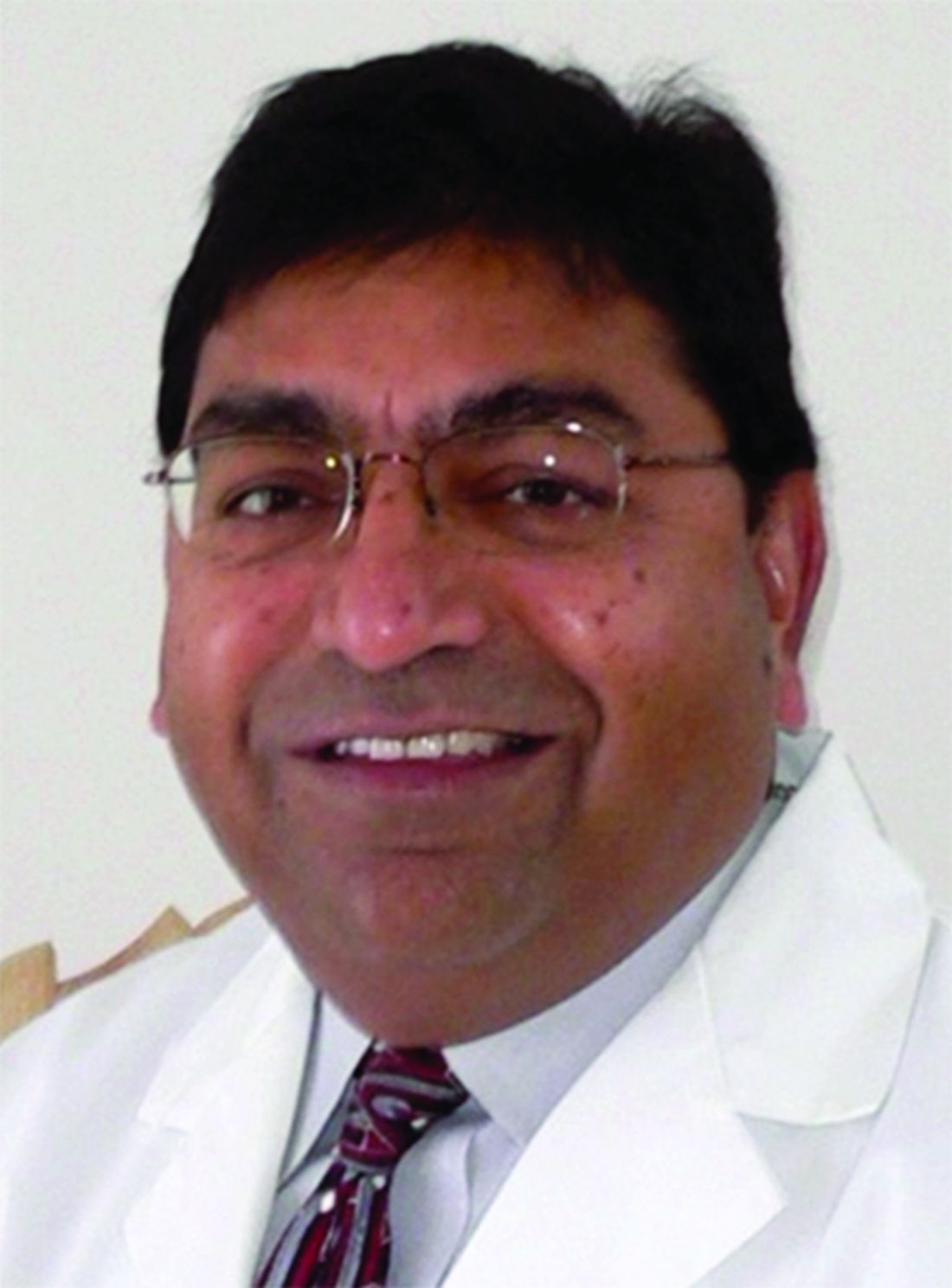User login
Meta-Analysis Highlights Litany of MASLD-Associated Complications, Encouraging New Treatment Targets
, based on a large-scale meta-analysis of longitudinal data.
These findings emphasize the multisystemic nature of MASLD, suggesting that broader treatment targets are needed to reduce systemic events and end organ complications, reported lead author Kai En Chan, MBBS, of the National University of Singapore, and colleagues.
“[D]espite the substantial impact of MASLD, with direct medical costs estimated to reach $103 billion in the United States alone, a comprehensive umbrella meta-analysis of the longitudinal complications associated with MASLD has yet to be conducted,” the investigators wrote in Clinical Gastroenterology and Hepatology, noting that key outcomes associated with sex and disease severity have yet to be elucidated. “A comprehensive understanding of the spectrum of clinical complications associated with MASLD is thus crucial in developing effective disease management strategies and optimizing the allocation of limited healthcare resources.”
To this end, the investigators analyzed data from 129 studies reporting longitudinal risks of clinical outcomes among adults with MASLD. Assessed complications spanned a broad array of organ systems and pathologies. Cardiovascular and oncologic conditions predominated, while chronic kidney disease, liver-related outcomes, gallstone formation, dementia, and reflux esophagitis were also considered.
The analysis revealed significant associations between MASLD and — in ascending level of risk — chronic kidney disease (hazard ratio [HR], 1.38), cardiovascular diseases (HR, 1.43), cancer (HR, 1.54), prediabetes (HR, 1.69), hypertension (HR, 1.75), diabetes (HR, 2.56), and metabolic syndrome (HR, 2.57).
Across cardiovascular diseases, MASLD raised risk of hypertension the most, by 75%. Among cancer types, MASLD increased risk of hepatocellular carcinoma to the greatest degree, by more than fourfold.
No significant sex-specific differences in MASLD-associated risk were detected for cancer, chronic kidney disease, diabetes, or cardiovascular disease, although the investigators urged a cautious interpretation of these findings, since relevant data were scarce.
“It is imperative to understand that MASLD is a complex and multifaceted condition that requires a comprehensive approach to recognition and treatment beyond that of the hepatologist alone,” the investigators wrote.
They also suggested that the link between MASLD and cancer deserves particular attention.
“Although the mechanism by which MASLD gives rise to cardiovascular disease and diabetes has been thoroughly researched, the pathophysiology of MASLD leading to extrahepatic carcinogenesis is less well understood and has been postulated to be linked to chronic inflammation and dysregulation of the gut microbiome in MASLD,” they wrote.
Lastly, considering the multiprong association between MASLD and so many complications, the investigators recommended broader clinical metrics for measuring outcomes in patients with MASLD.
“With the synergistic increases of metabolic diseases globally, treatment targets should in turn act beyond the resolution of fibrosis but also to reduce systemic end organ complications,” they concluded.The investigators disclosed relationships with AbbVie, Echosens, Gilead Sciences, and others.
In a massive meta-analysis of 129 studies that included over 6 million participants, Chan and colleagues evaluated the associations of MASLD with incident hepatic and extrahepatic outcomes. They report numerous associations for MASLD with metabolic, cardiovascular, and renal events as well as with gastrointestinal, hepatobiliary, and other types of cancers.
The unimpeded pace of the obesity pandemic remains a steady driver of the rise in the burden of metabolic syndrome and its components, including MASLD. Thus, approaches to tackle the rising burden of metabolic diseases including MASLD should start with the root driver, obesity. It is also imperative to consider addressing the cardiometabolic milieu in any approach designed to specifically target MASLD/MASH. Lifestyle modifications that include weight loss, smoking cessation, and avoidance of alcohol use may help reduce risks of cardiovascular disease and cancer, the leading causes of death in patients with MASLD. Anticipated pharmacologic therapies for MASH should not only improve liver endpoints but also have a beneficial or, at minimum, neutral extrahepatic effects on coexisting cardiometabolic conditions.
Samer Gawrieh, MD, is professor of clinical medicine in the Division of Gastroenterology and Hepatology at Indiana University School of Medicine, Indianapolis, where he serves as the Director of Hepatology Research and Clinical Fellowship Program. He receives funding for the National Institute of Diabetes and Digestive and Kidney Diseases and the National Institute on Alcohol Abuse and Alcoholism, and research grant support from Zydus and Viking, and serves on safety committees with TransMedics, Pfizer and Spruce.
In a massive meta-analysis of 129 studies that included over 6 million participants, Chan and colleagues evaluated the associations of MASLD with incident hepatic and extrahepatic outcomes. They report numerous associations for MASLD with metabolic, cardiovascular, and renal events as well as with gastrointestinal, hepatobiliary, and other types of cancers.
The unimpeded pace of the obesity pandemic remains a steady driver of the rise in the burden of metabolic syndrome and its components, including MASLD. Thus, approaches to tackle the rising burden of metabolic diseases including MASLD should start with the root driver, obesity. It is also imperative to consider addressing the cardiometabolic milieu in any approach designed to specifically target MASLD/MASH. Lifestyle modifications that include weight loss, smoking cessation, and avoidance of alcohol use may help reduce risks of cardiovascular disease and cancer, the leading causes of death in patients with MASLD. Anticipated pharmacologic therapies for MASH should not only improve liver endpoints but also have a beneficial or, at minimum, neutral extrahepatic effects on coexisting cardiometabolic conditions.
Samer Gawrieh, MD, is professor of clinical medicine in the Division of Gastroenterology and Hepatology at Indiana University School of Medicine, Indianapolis, where he serves as the Director of Hepatology Research and Clinical Fellowship Program. He receives funding for the National Institute of Diabetes and Digestive and Kidney Diseases and the National Institute on Alcohol Abuse and Alcoholism, and research grant support from Zydus and Viking, and serves on safety committees with TransMedics, Pfizer and Spruce.
In a massive meta-analysis of 129 studies that included over 6 million participants, Chan and colleagues evaluated the associations of MASLD with incident hepatic and extrahepatic outcomes. They report numerous associations for MASLD with metabolic, cardiovascular, and renal events as well as with gastrointestinal, hepatobiliary, and other types of cancers.
The unimpeded pace of the obesity pandemic remains a steady driver of the rise in the burden of metabolic syndrome and its components, including MASLD. Thus, approaches to tackle the rising burden of metabolic diseases including MASLD should start with the root driver, obesity. It is also imperative to consider addressing the cardiometabolic milieu in any approach designed to specifically target MASLD/MASH. Lifestyle modifications that include weight loss, smoking cessation, and avoidance of alcohol use may help reduce risks of cardiovascular disease and cancer, the leading causes of death in patients with MASLD. Anticipated pharmacologic therapies for MASH should not only improve liver endpoints but also have a beneficial or, at minimum, neutral extrahepatic effects on coexisting cardiometabolic conditions.
Samer Gawrieh, MD, is professor of clinical medicine in the Division of Gastroenterology and Hepatology at Indiana University School of Medicine, Indianapolis, where he serves as the Director of Hepatology Research and Clinical Fellowship Program. He receives funding for the National Institute of Diabetes and Digestive and Kidney Diseases and the National Institute on Alcohol Abuse and Alcoholism, and research grant support from Zydus and Viking, and serves on safety committees with TransMedics, Pfizer and Spruce.
, based on a large-scale meta-analysis of longitudinal data.
These findings emphasize the multisystemic nature of MASLD, suggesting that broader treatment targets are needed to reduce systemic events and end organ complications, reported lead author Kai En Chan, MBBS, of the National University of Singapore, and colleagues.
“[D]espite the substantial impact of MASLD, with direct medical costs estimated to reach $103 billion in the United States alone, a comprehensive umbrella meta-analysis of the longitudinal complications associated with MASLD has yet to be conducted,” the investigators wrote in Clinical Gastroenterology and Hepatology, noting that key outcomes associated with sex and disease severity have yet to be elucidated. “A comprehensive understanding of the spectrum of clinical complications associated with MASLD is thus crucial in developing effective disease management strategies and optimizing the allocation of limited healthcare resources.”
To this end, the investigators analyzed data from 129 studies reporting longitudinal risks of clinical outcomes among adults with MASLD. Assessed complications spanned a broad array of organ systems and pathologies. Cardiovascular and oncologic conditions predominated, while chronic kidney disease, liver-related outcomes, gallstone formation, dementia, and reflux esophagitis were also considered.
The analysis revealed significant associations between MASLD and — in ascending level of risk — chronic kidney disease (hazard ratio [HR], 1.38), cardiovascular diseases (HR, 1.43), cancer (HR, 1.54), prediabetes (HR, 1.69), hypertension (HR, 1.75), diabetes (HR, 2.56), and metabolic syndrome (HR, 2.57).
Across cardiovascular diseases, MASLD raised risk of hypertension the most, by 75%. Among cancer types, MASLD increased risk of hepatocellular carcinoma to the greatest degree, by more than fourfold.
No significant sex-specific differences in MASLD-associated risk were detected for cancer, chronic kidney disease, diabetes, or cardiovascular disease, although the investigators urged a cautious interpretation of these findings, since relevant data were scarce.
“It is imperative to understand that MASLD is a complex and multifaceted condition that requires a comprehensive approach to recognition and treatment beyond that of the hepatologist alone,” the investigators wrote.
They also suggested that the link between MASLD and cancer deserves particular attention.
“Although the mechanism by which MASLD gives rise to cardiovascular disease and diabetes has been thoroughly researched, the pathophysiology of MASLD leading to extrahepatic carcinogenesis is less well understood and has been postulated to be linked to chronic inflammation and dysregulation of the gut microbiome in MASLD,” they wrote.
Lastly, considering the multiprong association between MASLD and so many complications, the investigators recommended broader clinical metrics for measuring outcomes in patients with MASLD.
“With the synergistic increases of metabolic diseases globally, treatment targets should in turn act beyond the resolution of fibrosis but also to reduce systemic end organ complications,” they concluded.The investigators disclosed relationships with AbbVie, Echosens, Gilead Sciences, and others.
, based on a large-scale meta-analysis of longitudinal data.
These findings emphasize the multisystemic nature of MASLD, suggesting that broader treatment targets are needed to reduce systemic events and end organ complications, reported lead author Kai En Chan, MBBS, of the National University of Singapore, and colleagues.
“[D]espite the substantial impact of MASLD, with direct medical costs estimated to reach $103 billion in the United States alone, a comprehensive umbrella meta-analysis of the longitudinal complications associated with MASLD has yet to be conducted,” the investigators wrote in Clinical Gastroenterology and Hepatology, noting that key outcomes associated with sex and disease severity have yet to be elucidated. “A comprehensive understanding of the spectrum of clinical complications associated with MASLD is thus crucial in developing effective disease management strategies and optimizing the allocation of limited healthcare resources.”
To this end, the investigators analyzed data from 129 studies reporting longitudinal risks of clinical outcomes among adults with MASLD. Assessed complications spanned a broad array of organ systems and pathologies. Cardiovascular and oncologic conditions predominated, while chronic kidney disease, liver-related outcomes, gallstone formation, dementia, and reflux esophagitis were also considered.
The analysis revealed significant associations between MASLD and — in ascending level of risk — chronic kidney disease (hazard ratio [HR], 1.38), cardiovascular diseases (HR, 1.43), cancer (HR, 1.54), prediabetes (HR, 1.69), hypertension (HR, 1.75), diabetes (HR, 2.56), and metabolic syndrome (HR, 2.57).
Across cardiovascular diseases, MASLD raised risk of hypertension the most, by 75%. Among cancer types, MASLD increased risk of hepatocellular carcinoma to the greatest degree, by more than fourfold.
No significant sex-specific differences in MASLD-associated risk were detected for cancer, chronic kidney disease, diabetes, or cardiovascular disease, although the investigators urged a cautious interpretation of these findings, since relevant data were scarce.
“It is imperative to understand that MASLD is a complex and multifaceted condition that requires a comprehensive approach to recognition and treatment beyond that of the hepatologist alone,” the investigators wrote.
They also suggested that the link between MASLD and cancer deserves particular attention.
“Although the mechanism by which MASLD gives rise to cardiovascular disease and diabetes has been thoroughly researched, the pathophysiology of MASLD leading to extrahepatic carcinogenesis is less well understood and has been postulated to be linked to chronic inflammation and dysregulation of the gut microbiome in MASLD,” they wrote.
Lastly, considering the multiprong association between MASLD and so many complications, the investigators recommended broader clinical metrics for measuring outcomes in patients with MASLD.
“With the synergistic increases of metabolic diseases globally, treatment targets should in turn act beyond the resolution of fibrosis but also to reduce systemic end organ complications,” they concluded.The investigators disclosed relationships with AbbVie, Echosens, Gilead Sciences, and others.
FROM CLINICAL GASTROENTEROLOGY AND HEPATOLOGY
AGA Gives Guidance on Subepithelial Lesions
The new guidance document, authored by Lionel S. D’Souza, MD, of Stony Brook University Hospital, Stony Brook, New York, and colleagues, offers a framework for deciding between various EFTR techniques based on lesion histology, size, and location.
“EFTR has emerged as a novel treatment option for select SELs,” the update panelists wrote in Gastroenterology. “In this commentary, we reviewed the different techniques and uses of EFTR for the management of SELs.”
They noted that all patients with SELs should first undergo multidisciplinary evaluation in accordance with a separate AGA guidance document on SELs.
The present update focuses specifically on EFTR, first by distinguishing between exposed and nonexposed techniques. While the former involves resection of the mucosa and all other layers of the wall, the latter relies upon a ‘close first, then cut’ method to prevent perforation, or preservation of an overlying flap of mucosa.
The new guidance calls for a nonexposed technique unless the exposed approach is necessary.
“In our opinion, the exposed EFTR technique should be considered for lesions in which other methods (i.e., endoscopic mucosal resection, endoscopic submucosal dissection, and nonexposed EFTR) cannot reliably and completely excise SELs due to larger size or difficult location of the lesion,” the update panelists wrote. “The exposed EFTR technique may be best suited for gastric lesions and as an alternative to other endoscopic approaches for SELs in the rectum. The exposed technique should be avoided in the esophagus and duodenum, as the clinical consequences of a leak can be devastating and endoscopic closure is notoriously challenging.”
Dr. D’Souza and colleagues went on to discuss various nonexposed techniques, including submucosal tunneling and endoscopic resection and peroral endoscopic tunnel resection (STER/POET), device-assisted endoscopic full-thickness resection, and full-thickness resection with an over-the-scope clip with integrated snare (FTRD).
They highlighted how STER/POET encourages traction on the lesion and scope stability while limiting extravasation of luminal contents, and closure tends to be easier than with exposed EFTR. This approach should be reserved for tumors smaller than approximately 3-4 cm, however, with the update noting that lesions larger than 2 cm may present increased risk of incomplete resection. Similarly, device-assisted endoscopic full-thickness resection, which involves pulling or suctioning the lesion into the device, is also limited by lesion size, although fewer data are available to guide size thresholds.
FTRD, which involves “a 23-mm deep cap with a specially designed over-the-scope clip and integrated cautery snare,” also lacks a broad evidence base.
“Although there has been reasonable clinical success reported in most case series, several factors should be considered with the use of the FTRD for SELs,” the update cautions.
Specifically, a recent Dutch and German registry study of FTRD had an adverse event rate of 11.3%, with an approximate 1% perforation rate. More than half of the perforations were due to technical or procedural issues.
“This adverse event rate may improve as individual experience with the device is gained; however, data on this are lacking,” the panelists wrote, also noting that lesions 1.5 cm or larger may carry a higher risk of incomplete resection.
Ultimately, the clinical practice update calls for a personalized approach to EFTR decision-making that considers factors extending beyond the lesion.
“The ‘ideal’ technique will depend on various patient and lesion characteristics, as well as the endoscopist’s preference and available expertise,” Dr. D’Souza and colleagues concluded. “Further research into the efficacy of these resection techniques and the long-term outcomes in patients after endoscopic resection of SELs will be essential in standardizing appropriate resection algorithms.”
This clinical practice update was commissioned and approved by AGA Institute. The investigators disclosed relationships with Olympus, Fujifilm, Apollo Endosurgery, and others.
The new guidance document, authored by Lionel S. D’Souza, MD, of Stony Brook University Hospital, Stony Brook, New York, and colleagues, offers a framework for deciding between various EFTR techniques based on lesion histology, size, and location.
“EFTR has emerged as a novel treatment option for select SELs,” the update panelists wrote in Gastroenterology. “In this commentary, we reviewed the different techniques and uses of EFTR for the management of SELs.”
They noted that all patients with SELs should first undergo multidisciplinary evaluation in accordance with a separate AGA guidance document on SELs.
The present update focuses specifically on EFTR, first by distinguishing between exposed and nonexposed techniques. While the former involves resection of the mucosa and all other layers of the wall, the latter relies upon a ‘close first, then cut’ method to prevent perforation, or preservation of an overlying flap of mucosa.
The new guidance calls for a nonexposed technique unless the exposed approach is necessary.
“In our opinion, the exposed EFTR technique should be considered for lesions in which other methods (i.e., endoscopic mucosal resection, endoscopic submucosal dissection, and nonexposed EFTR) cannot reliably and completely excise SELs due to larger size or difficult location of the lesion,” the update panelists wrote. “The exposed EFTR technique may be best suited for gastric lesions and as an alternative to other endoscopic approaches for SELs in the rectum. The exposed technique should be avoided in the esophagus and duodenum, as the clinical consequences of a leak can be devastating and endoscopic closure is notoriously challenging.”
Dr. D’Souza and colleagues went on to discuss various nonexposed techniques, including submucosal tunneling and endoscopic resection and peroral endoscopic tunnel resection (STER/POET), device-assisted endoscopic full-thickness resection, and full-thickness resection with an over-the-scope clip with integrated snare (FTRD).
They highlighted how STER/POET encourages traction on the lesion and scope stability while limiting extravasation of luminal contents, and closure tends to be easier than with exposed EFTR. This approach should be reserved for tumors smaller than approximately 3-4 cm, however, with the update noting that lesions larger than 2 cm may present increased risk of incomplete resection. Similarly, device-assisted endoscopic full-thickness resection, which involves pulling or suctioning the lesion into the device, is also limited by lesion size, although fewer data are available to guide size thresholds.
FTRD, which involves “a 23-mm deep cap with a specially designed over-the-scope clip and integrated cautery snare,” also lacks a broad evidence base.
“Although there has been reasonable clinical success reported in most case series, several factors should be considered with the use of the FTRD for SELs,” the update cautions.
Specifically, a recent Dutch and German registry study of FTRD had an adverse event rate of 11.3%, with an approximate 1% perforation rate. More than half of the perforations were due to technical or procedural issues.
“This adverse event rate may improve as individual experience with the device is gained; however, data on this are lacking,” the panelists wrote, also noting that lesions 1.5 cm or larger may carry a higher risk of incomplete resection.
Ultimately, the clinical practice update calls for a personalized approach to EFTR decision-making that considers factors extending beyond the lesion.
“The ‘ideal’ technique will depend on various patient and lesion characteristics, as well as the endoscopist’s preference and available expertise,” Dr. D’Souza and colleagues concluded. “Further research into the efficacy of these resection techniques and the long-term outcomes in patients after endoscopic resection of SELs will be essential in standardizing appropriate resection algorithms.”
This clinical practice update was commissioned and approved by AGA Institute. The investigators disclosed relationships with Olympus, Fujifilm, Apollo Endosurgery, and others.
The new guidance document, authored by Lionel S. D’Souza, MD, of Stony Brook University Hospital, Stony Brook, New York, and colleagues, offers a framework for deciding between various EFTR techniques based on lesion histology, size, and location.
“EFTR has emerged as a novel treatment option for select SELs,” the update panelists wrote in Gastroenterology. “In this commentary, we reviewed the different techniques and uses of EFTR for the management of SELs.”
They noted that all patients with SELs should first undergo multidisciplinary evaluation in accordance with a separate AGA guidance document on SELs.
The present update focuses specifically on EFTR, first by distinguishing between exposed and nonexposed techniques. While the former involves resection of the mucosa and all other layers of the wall, the latter relies upon a ‘close first, then cut’ method to prevent perforation, or preservation of an overlying flap of mucosa.
The new guidance calls for a nonexposed technique unless the exposed approach is necessary.
“In our opinion, the exposed EFTR technique should be considered for lesions in which other methods (i.e., endoscopic mucosal resection, endoscopic submucosal dissection, and nonexposed EFTR) cannot reliably and completely excise SELs due to larger size or difficult location of the lesion,” the update panelists wrote. “The exposed EFTR technique may be best suited for gastric lesions and as an alternative to other endoscopic approaches for SELs in the rectum. The exposed technique should be avoided in the esophagus and duodenum, as the clinical consequences of a leak can be devastating and endoscopic closure is notoriously challenging.”
Dr. D’Souza and colleagues went on to discuss various nonexposed techniques, including submucosal tunneling and endoscopic resection and peroral endoscopic tunnel resection (STER/POET), device-assisted endoscopic full-thickness resection, and full-thickness resection with an over-the-scope clip with integrated snare (FTRD).
They highlighted how STER/POET encourages traction on the lesion and scope stability while limiting extravasation of luminal contents, and closure tends to be easier than with exposed EFTR. This approach should be reserved for tumors smaller than approximately 3-4 cm, however, with the update noting that lesions larger than 2 cm may present increased risk of incomplete resection. Similarly, device-assisted endoscopic full-thickness resection, which involves pulling or suctioning the lesion into the device, is also limited by lesion size, although fewer data are available to guide size thresholds.
FTRD, which involves “a 23-mm deep cap with a specially designed over-the-scope clip and integrated cautery snare,” also lacks a broad evidence base.
“Although there has been reasonable clinical success reported in most case series, several factors should be considered with the use of the FTRD for SELs,” the update cautions.
Specifically, a recent Dutch and German registry study of FTRD had an adverse event rate of 11.3%, with an approximate 1% perforation rate. More than half of the perforations were due to technical or procedural issues.
“This adverse event rate may improve as individual experience with the device is gained; however, data on this are lacking,” the panelists wrote, also noting that lesions 1.5 cm or larger may carry a higher risk of incomplete resection.
Ultimately, the clinical practice update calls for a personalized approach to EFTR decision-making that considers factors extending beyond the lesion.
“The ‘ideal’ technique will depend on various patient and lesion characteristics, as well as the endoscopist’s preference and available expertise,” Dr. D’Souza and colleagues concluded. “Further research into the efficacy of these resection techniques and the long-term outcomes in patients after endoscopic resection of SELs will be essential in standardizing appropriate resection algorithms.”
This clinical practice update was commissioned and approved by AGA Institute. The investigators disclosed relationships with Olympus, Fujifilm, Apollo Endosurgery, and others.
FROM GASTROENTEROLOGY
Gastric cancer screening benefits may vary by country
South Korea’s gastric cancer screening (GC) program has reduced disease-related mortality by 41%.
Japan’s? Not at all.
These findings suggest that the benefits of nationwide gastric cancer screening may vary widely between countries while offering insights into program best practices, reported lead author Dianqin Sun, a PhD candidate at the University Medical Center, Rotterdam, the Netherlands, and colleagues.
“Despite the lack of evidence from randomized controlled trials, South Korea and Japan, two countries with a high GC incidence, have been at the forefront of GC secondary prevention and have implemented nationwide organized GC screening programs for decades using endoscopy or upper gastrointestinal series,” the investigators wrote in Gastroenterology.
Although individual-level data from both programs supports their efficacy in reducing GC-related death, the investigators noted that these studies have been limited by volunteer bias, and population-level data remain scarce.
To address this knowledge gap, Mr. Sun and colleagues used the flexible synthetic control method to determine how screening programs affected GC mortality rate, as well as a composite mortality rate for esophageal cancer and peptic ulcer.
“The concept of the synthetic control method is to construct a synthetic control for the treated country by deriving a weighted average of multiple control countries without intervention,” the investigators wrote. “The weight of controls is determined in a data-driven way to minimize the differences in preintervention outcomes (i.e., GC mortality before the introduction of nationwide screening) and other covariates associated with GC mortality between the treated country and the synthetic control.”
This approach revealed starkly different benefits for South Korea and Japan.
Compared with the synthetic control, South Korea’s screening program was associated with a 17% reduction in GC mortality risk on average, with risk dropping as far as 41% after the 15th year of screening. The Korean program was also associated with a 28% reduction in mortality from esophageal cancer and peptic ulcer, with this rate decreasing as much as 53% after 15 years of screening.
In sharp contrast, Japan’s mortality rates for GC and the other GI diseases were not significantly different from the synthetic control after 34 years of screening.
The investigators suggested several possible factors behind the lack of benefit in Japan, including the absence of a recommendation for endoscopic screening until 2014. In 2015, just 19% of municipalities in Japan were using endoscopy for screening, compared with more than 72% in South Korea in 2011. Furthermore, guideline adherence and screening program adherence are lower in Japan, they noted.
“Therefore, the findings in our study may have been expected,” the investigators wrote. “However, it is important to note that certain covariates were unavailable for the analysis in Japan, which may have introduced potential biases, the directions of which are unclear. Further studies are needed to compare the screening impact in South Korea and Japan.”
Meanwhile, the present results could guide screening programs around the world, Mr. Sun and colleagues suggested.
“This [study] highlights the significance of a well-planned organizational structure and evidence-based decision making when organized screening is started,” they wrote. “With a quasi-experimental design, this study will facilitate triangulating current observational evidence and provide valuable insights while the GC screening randomized controlled trials are still underway. The data and experience from South Korea and Japan will inform GC screening policy in other countries.”
The investigators disclosed no conflicts of interest.
Gastric cancer (GC) is the fourth leading cause of cancer-related death worldwide. It remains a common cancer in some Asian countries and among Asian immigrants in western countries.
To date, only Japan and South Korea have national GC screening programs. Previous observational data from these screening programs indicated their effectiveness in reducing GC mortality but were susceptible to volunteer bias. The population impact of these national programs remains uncertain.
The disparities in screening programs between South Korea and Japan suggest that factors like screening method, participation rates, and organizational strategies might influence the effectiveness of GC screening. Currently, at least 2 large-scale randomized trials of GC screening are underway. It remains uncertain how the experience from South Korea and Japan will inform GC screening policy in other countries.
Francis K.L. Chan, MD, is professor of medicine at The Chinese University of Hong Kong. He has no conflicts to declare in relation to this commentary.
Gastric cancer (GC) is the fourth leading cause of cancer-related death worldwide. It remains a common cancer in some Asian countries and among Asian immigrants in western countries.
To date, only Japan and South Korea have national GC screening programs. Previous observational data from these screening programs indicated their effectiveness in reducing GC mortality but were susceptible to volunteer bias. The population impact of these national programs remains uncertain.
The disparities in screening programs between South Korea and Japan suggest that factors like screening method, participation rates, and organizational strategies might influence the effectiveness of GC screening. Currently, at least 2 large-scale randomized trials of GC screening are underway. It remains uncertain how the experience from South Korea and Japan will inform GC screening policy in other countries.
Francis K.L. Chan, MD, is professor of medicine at The Chinese University of Hong Kong. He has no conflicts to declare in relation to this commentary.
Gastric cancer (GC) is the fourth leading cause of cancer-related death worldwide. It remains a common cancer in some Asian countries and among Asian immigrants in western countries.
To date, only Japan and South Korea have national GC screening programs. Previous observational data from these screening programs indicated their effectiveness in reducing GC mortality but were susceptible to volunteer bias. The population impact of these national programs remains uncertain.
The disparities in screening programs between South Korea and Japan suggest that factors like screening method, participation rates, and organizational strategies might influence the effectiveness of GC screening. Currently, at least 2 large-scale randomized trials of GC screening are underway. It remains uncertain how the experience from South Korea and Japan will inform GC screening policy in other countries.
Francis K.L. Chan, MD, is professor of medicine at The Chinese University of Hong Kong. He has no conflicts to declare in relation to this commentary.
South Korea’s gastric cancer screening (GC) program has reduced disease-related mortality by 41%.
Japan’s? Not at all.
These findings suggest that the benefits of nationwide gastric cancer screening may vary widely between countries while offering insights into program best practices, reported lead author Dianqin Sun, a PhD candidate at the University Medical Center, Rotterdam, the Netherlands, and colleagues.
“Despite the lack of evidence from randomized controlled trials, South Korea and Japan, two countries with a high GC incidence, have been at the forefront of GC secondary prevention and have implemented nationwide organized GC screening programs for decades using endoscopy or upper gastrointestinal series,” the investigators wrote in Gastroenterology.
Although individual-level data from both programs supports their efficacy in reducing GC-related death, the investigators noted that these studies have been limited by volunteer bias, and population-level data remain scarce.
To address this knowledge gap, Mr. Sun and colleagues used the flexible synthetic control method to determine how screening programs affected GC mortality rate, as well as a composite mortality rate for esophageal cancer and peptic ulcer.
“The concept of the synthetic control method is to construct a synthetic control for the treated country by deriving a weighted average of multiple control countries without intervention,” the investigators wrote. “The weight of controls is determined in a data-driven way to minimize the differences in preintervention outcomes (i.e., GC mortality before the introduction of nationwide screening) and other covariates associated with GC mortality between the treated country and the synthetic control.”
This approach revealed starkly different benefits for South Korea and Japan.
Compared with the synthetic control, South Korea’s screening program was associated with a 17% reduction in GC mortality risk on average, with risk dropping as far as 41% after the 15th year of screening. The Korean program was also associated with a 28% reduction in mortality from esophageal cancer and peptic ulcer, with this rate decreasing as much as 53% after 15 years of screening.
In sharp contrast, Japan’s mortality rates for GC and the other GI diseases were not significantly different from the synthetic control after 34 years of screening.
The investigators suggested several possible factors behind the lack of benefit in Japan, including the absence of a recommendation for endoscopic screening until 2014. In 2015, just 19% of municipalities in Japan were using endoscopy for screening, compared with more than 72% in South Korea in 2011. Furthermore, guideline adherence and screening program adherence are lower in Japan, they noted.
“Therefore, the findings in our study may have been expected,” the investigators wrote. “However, it is important to note that certain covariates were unavailable for the analysis in Japan, which may have introduced potential biases, the directions of which are unclear. Further studies are needed to compare the screening impact in South Korea and Japan.”
Meanwhile, the present results could guide screening programs around the world, Mr. Sun and colleagues suggested.
“This [study] highlights the significance of a well-planned organizational structure and evidence-based decision making when organized screening is started,” they wrote. “With a quasi-experimental design, this study will facilitate triangulating current observational evidence and provide valuable insights while the GC screening randomized controlled trials are still underway. The data and experience from South Korea and Japan will inform GC screening policy in other countries.”
The investigators disclosed no conflicts of interest.
South Korea’s gastric cancer screening (GC) program has reduced disease-related mortality by 41%.
Japan’s? Not at all.
These findings suggest that the benefits of nationwide gastric cancer screening may vary widely between countries while offering insights into program best practices, reported lead author Dianqin Sun, a PhD candidate at the University Medical Center, Rotterdam, the Netherlands, and colleagues.
“Despite the lack of evidence from randomized controlled trials, South Korea and Japan, two countries with a high GC incidence, have been at the forefront of GC secondary prevention and have implemented nationwide organized GC screening programs for decades using endoscopy or upper gastrointestinal series,” the investigators wrote in Gastroenterology.
Although individual-level data from both programs supports their efficacy in reducing GC-related death, the investigators noted that these studies have been limited by volunteer bias, and population-level data remain scarce.
To address this knowledge gap, Mr. Sun and colleagues used the flexible synthetic control method to determine how screening programs affected GC mortality rate, as well as a composite mortality rate for esophageal cancer and peptic ulcer.
“The concept of the synthetic control method is to construct a synthetic control for the treated country by deriving a weighted average of multiple control countries without intervention,” the investigators wrote. “The weight of controls is determined in a data-driven way to minimize the differences in preintervention outcomes (i.e., GC mortality before the introduction of nationwide screening) and other covariates associated with GC mortality between the treated country and the synthetic control.”
This approach revealed starkly different benefits for South Korea and Japan.
Compared with the synthetic control, South Korea’s screening program was associated with a 17% reduction in GC mortality risk on average, with risk dropping as far as 41% after the 15th year of screening. The Korean program was also associated with a 28% reduction in mortality from esophageal cancer and peptic ulcer, with this rate decreasing as much as 53% after 15 years of screening.
In sharp contrast, Japan’s mortality rates for GC and the other GI diseases were not significantly different from the synthetic control after 34 years of screening.
The investigators suggested several possible factors behind the lack of benefit in Japan, including the absence of a recommendation for endoscopic screening until 2014. In 2015, just 19% of municipalities in Japan were using endoscopy for screening, compared with more than 72% in South Korea in 2011. Furthermore, guideline adherence and screening program adherence are lower in Japan, they noted.
“Therefore, the findings in our study may have been expected,” the investigators wrote. “However, it is important to note that certain covariates were unavailable for the analysis in Japan, which may have introduced potential biases, the directions of which are unclear. Further studies are needed to compare the screening impact in South Korea and Japan.”
Meanwhile, the present results could guide screening programs around the world, Mr. Sun and colleagues suggested.
“This [study] highlights the significance of a well-planned organizational structure and evidence-based decision making when organized screening is started,” they wrote. “With a quasi-experimental design, this study will facilitate triangulating current observational evidence and provide valuable insights while the GC screening randomized controlled trials are still underway. The data and experience from South Korea and Japan will inform GC screening policy in other countries.”
The investigators disclosed no conflicts of interest.
FROM GASTROENTEROLOGY
Dueling Gut Bacteria Impact Chronic HBV Progression
, according to investigators.
While Ruminococcus gnavus promotes immune tolerance and therefore HBV persistence, Akkermansia muciniphila stimulates the immune system, promoting viral clearance, reported lead author Huey-Huey Chua, MD, of the National Taiwan University College of Medicine and Children’s Hospital, Taipei, and colleagues.
These findings could lead to new therapeutic strategies, such as administration of the secretory products of A. muciniphila, or provision of probiotics and prebiotics that tip the balance toward this more beneficial bacterium, the investigators wrote in Cellular and Molecular Gastroenterology and Hepatology.
Their study, which included data from both human patients and mouse models of CHB, was grounded in prior research showing a link between gut microbiota and the age-dependence of HBV immunity.
“Sterilization of the gut microbiota using antibiotics prevents adult mice from rapidly clearing HBV and restores the tolerance phenotype, implying that the gut microbiota may transmit signals to break liver tolerance and evoke rapid HBV clearance,” Dr. Chua and colleagues wrote. “We hypothesized that the wax and wane of gut microbiota signatures may determine the progression of CHB. We aimed to delineate what the pivotal bacteria are and how they manipulate the progression of CHB.”
They began by analyzing fecal samples from 102 patients with CHB either in the immune-tolerant (IT) or immune-active (IA) phase of infection.
R. gnavus was the most abundant species among IT patients, whereas A. muciniphila was most abundant among patients in the IA phase. Higher levels of A. muciniphila were also associated with early hepatitis B e-antigen (HBeAG) loss, HBeAG seroconversion, and flares of aminotransferase. A mouse model echoed these findings.
Further experiments with mouse models revealed that R. gnavus modulates bile acids to promote HBV persistence and prolongation of the IT course. In opposition, A. muciniphila removes cholesterol and secretes metabolites that inhibit growth and function of R. gnavus.
“These novel findings will certainly confer a groundbreaking impact on the future therapy of CHB,” Dr. Chua and colleagues wrote.
They went on to describe several therapeutic strategies worth further investigation.
“A key step to promote switching from the IT to IA phase is to lessen the richness of R. gnavus and bile acid bioconversion from cholesterol,” they wrote. The secretory products of A. muciniphila that successfully ameliorate the burden of R. gnavus outgrowth can be provided as useful means to induce anti-HBV efficacy. Also, the development of targeted probiotics or prebiotics that can modulate the gut microbiota composition to favor the beneficial effects of A. muciniphila while inhibiting the detrimental effects of R. gnavus may have translational value for CHB.”
The study was supported by the Ministry of Science and Technology, Executive Yuan, Taiwan and the Center of Precision Medicine from Featured Areas Research Center Program within the Framework of the Higher Education Sprout Project by the Ministry of Education in Taiwan. The investigators disclosed no conflicts of interest.
Clinical observations have long indicated that chronic hepatitis B (CHB) patients with a prolonged immune-tolerant (IT) phase are at a higher risk of liver diseases, while those with an early transition to the immune-active (IA) phase are associated with a better clinical outcome. However, the underlying mechanisms remain unclear.
This study merits attention as it marks an important advancement in our understanding of how gut microbiota affects the immune response and, in turn, the progression of CHB, offering insights for potential A. muciniphila–based therapies. Nonetheless, the research is still in its infancy, and further studies, including longitudinal analysis to determine gut microbiota changes from IT to IA, are required. The prospect of A. muciniphila supplementation could be beneficial for CHB patients, warranting clinical trials. Continued research could lead to improved management and prevention of liver diseases in this patient population with CHB.
Qirong Jiang, MD, and Dawu Zeng, MD, are based in the Hepatology Research Institute, the First Affiliated Hospital, Fujian Medical University, Fuzhou, China. They report no conflicts of interest.
Clinical observations have long indicated that chronic hepatitis B (CHB) patients with a prolonged immune-tolerant (IT) phase are at a higher risk of liver diseases, while those with an early transition to the immune-active (IA) phase are associated with a better clinical outcome. However, the underlying mechanisms remain unclear.
This study merits attention as it marks an important advancement in our understanding of how gut microbiota affects the immune response and, in turn, the progression of CHB, offering insights for potential A. muciniphila–based therapies. Nonetheless, the research is still in its infancy, and further studies, including longitudinal analysis to determine gut microbiota changes from IT to IA, are required. The prospect of A. muciniphila supplementation could be beneficial for CHB patients, warranting clinical trials. Continued research could lead to improved management and prevention of liver diseases in this patient population with CHB.
Qirong Jiang, MD, and Dawu Zeng, MD, are based in the Hepatology Research Institute, the First Affiliated Hospital, Fujian Medical University, Fuzhou, China. They report no conflicts of interest.
Clinical observations have long indicated that chronic hepatitis B (CHB) patients with a prolonged immune-tolerant (IT) phase are at a higher risk of liver diseases, while those with an early transition to the immune-active (IA) phase are associated with a better clinical outcome. However, the underlying mechanisms remain unclear.
This study merits attention as it marks an important advancement in our understanding of how gut microbiota affects the immune response and, in turn, the progression of CHB, offering insights for potential A. muciniphila–based therapies. Nonetheless, the research is still in its infancy, and further studies, including longitudinal analysis to determine gut microbiota changes from IT to IA, are required. The prospect of A. muciniphila supplementation could be beneficial for CHB patients, warranting clinical trials. Continued research could lead to improved management and prevention of liver diseases in this patient population with CHB.
Qirong Jiang, MD, and Dawu Zeng, MD, are based in the Hepatology Research Institute, the First Affiliated Hospital, Fujian Medical University, Fuzhou, China. They report no conflicts of interest.
, according to investigators.
While Ruminococcus gnavus promotes immune tolerance and therefore HBV persistence, Akkermansia muciniphila stimulates the immune system, promoting viral clearance, reported lead author Huey-Huey Chua, MD, of the National Taiwan University College of Medicine and Children’s Hospital, Taipei, and colleagues.
These findings could lead to new therapeutic strategies, such as administration of the secretory products of A. muciniphila, or provision of probiotics and prebiotics that tip the balance toward this more beneficial bacterium, the investigators wrote in Cellular and Molecular Gastroenterology and Hepatology.
Their study, which included data from both human patients and mouse models of CHB, was grounded in prior research showing a link between gut microbiota and the age-dependence of HBV immunity.
“Sterilization of the gut microbiota using antibiotics prevents adult mice from rapidly clearing HBV and restores the tolerance phenotype, implying that the gut microbiota may transmit signals to break liver tolerance and evoke rapid HBV clearance,” Dr. Chua and colleagues wrote. “We hypothesized that the wax and wane of gut microbiota signatures may determine the progression of CHB. We aimed to delineate what the pivotal bacteria are and how they manipulate the progression of CHB.”
They began by analyzing fecal samples from 102 patients with CHB either in the immune-tolerant (IT) or immune-active (IA) phase of infection.
R. gnavus was the most abundant species among IT patients, whereas A. muciniphila was most abundant among patients in the IA phase. Higher levels of A. muciniphila were also associated with early hepatitis B e-antigen (HBeAG) loss, HBeAG seroconversion, and flares of aminotransferase. A mouse model echoed these findings.
Further experiments with mouse models revealed that R. gnavus modulates bile acids to promote HBV persistence and prolongation of the IT course. In opposition, A. muciniphila removes cholesterol and secretes metabolites that inhibit growth and function of R. gnavus.
“These novel findings will certainly confer a groundbreaking impact on the future therapy of CHB,” Dr. Chua and colleagues wrote.
They went on to describe several therapeutic strategies worth further investigation.
“A key step to promote switching from the IT to IA phase is to lessen the richness of R. gnavus and bile acid bioconversion from cholesterol,” they wrote. The secretory products of A. muciniphila that successfully ameliorate the burden of R. gnavus outgrowth can be provided as useful means to induce anti-HBV efficacy. Also, the development of targeted probiotics or prebiotics that can modulate the gut microbiota composition to favor the beneficial effects of A. muciniphila while inhibiting the detrimental effects of R. gnavus may have translational value for CHB.”
The study was supported by the Ministry of Science and Technology, Executive Yuan, Taiwan and the Center of Precision Medicine from Featured Areas Research Center Program within the Framework of the Higher Education Sprout Project by the Ministry of Education in Taiwan. The investigators disclosed no conflicts of interest.
, according to investigators.
While Ruminococcus gnavus promotes immune tolerance and therefore HBV persistence, Akkermansia muciniphila stimulates the immune system, promoting viral clearance, reported lead author Huey-Huey Chua, MD, of the National Taiwan University College of Medicine and Children’s Hospital, Taipei, and colleagues.
These findings could lead to new therapeutic strategies, such as administration of the secretory products of A. muciniphila, or provision of probiotics and prebiotics that tip the balance toward this more beneficial bacterium, the investigators wrote in Cellular and Molecular Gastroenterology and Hepatology.
Their study, which included data from both human patients and mouse models of CHB, was grounded in prior research showing a link between gut microbiota and the age-dependence of HBV immunity.
“Sterilization of the gut microbiota using antibiotics prevents adult mice from rapidly clearing HBV and restores the tolerance phenotype, implying that the gut microbiota may transmit signals to break liver tolerance and evoke rapid HBV clearance,” Dr. Chua and colleagues wrote. “We hypothesized that the wax and wane of gut microbiota signatures may determine the progression of CHB. We aimed to delineate what the pivotal bacteria are and how they manipulate the progression of CHB.”
They began by analyzing fecal samples from 102 patients with CHB either in the immune-tolerant (IT) or immune-active (IA) phase of infection.
R. gnavus was the most abundant species among IT patients, whereas A. muciniphila was most abundant among patients in the IA phase. Higher levels of A. muciniphila were also associated with early hepatitis B e-antigen (HBeAG) loss, HBeAG seroconversion, and flares of aminotransferase. A mouse model echoed these findings.
Further experiments with mouse models revealed that R. gnavus modulates bile acids to promote HBV persistence and prolongation of the IT course. In opposition, A. muciniphila removes cholesterol and secretes metabolites that inhibit growth and function of R. gnavus.
“These novel findings will certainly confer a groundbreaking impact on the future therapy of CHB,” Dr. Chua and colleagues wrote.
They went on to describe several therapeutic strategies worth further investigation.
“A key step to promote switching from the IT to IA phase is to lessen the richness of R. gnavus and bile acid bioconversion from cholesterol,” they wrote. The secretory products of A. muciniphila that successfully ameliorate the burden of R. gnavus outgrowth can be provided as useful means to induce anti-HBV efficacy. Also, the development of targeted probiotics or prebiotics that can modulate the gut microbiota composition to favor the beneficial effects of A. muciniphila while inhibiting the detrimental effects of R. gnavus may have translational value for CHB.”
The study was supported by the Ministry of Science and Technology, Executive Yuan, Taiwan and the Center of Precision Medicine from Featured Areas Research Center Program within the Framework of the Higher Education Sprout Project by the Ministry of Education in Taiwan. The investigators disclosed no conflicts of interest.
FROM CELLULAR AND MOLECULAR GASTROENTEROLOGY AND HEPATOLOGY
AGA updates polypectomy guidance
The new guidance document, authored by Andrew P. Copland, MD, of the University of Virginia Health System, Charlottesville, and colleagues, includes 12 pieces of best practice advice pertaining to polyp removal, including the need for evaluation, considerations for selecting a resection strategy, and reasons for referral.
“Polypectomy techniques are continually evolving with improvements in the ability to assess polyps for high-risk features and with development of appropriate procedures for complete and safe polyp resection,” the authors wrote in Clinical Gastroenterology and Hepatology. “This clinical practice update provides guidance in characterizing polyps and choosing appropriate polypectomy techniques for polyps 2 cm or less in size, which comprise most polyps encountered by most endoscopists.”
To begin, they advised a “structured visual assessment using high-definition white light and/or electronic chromoendoscopy and with photodocumentation” for all polyps identified during routine colonoscopy, with close attention to any features suggesting submucosal invasion.
Next, in a series of statements, the guidance document steers appropriate use of various cold and hot polypectomy techniques.
Cold snare polypectomy should be used for polyps less than 10 mm in size, while cold forceps may be considered for polyps 1-3 mm in diameter. Cold resection techniques should also be used for serrated polyps, with use of submucosal injection, if needed, for polyps greater than 10 mm with unclear margins.
For polyps of intermediate size (10-19 mm), both cold and hot snare polypectomy should be considered, alongside endoscopic mucosal resection for polyps, Dr. Copland and colleagues wrote, noting that hot snare polypectomy should be used for removal of pedunculated lesions greater than 10 mm in size.
In contrast, the update advises against use of hot forceps polypectomy in any scenario.
“Hot forceps polypectomy for diminutive and small polyps is associated with higher incomplete polyp removal rates compared with cold snare polypectomy,” the update panelists wrote. “It is also associated with higher risks of postpolypectomy hemorrhage, particularly in the right colon with higher risks of deep thermal injury. Therefore, the use of hot forceps polypectomy is discouraged.”
In another best practice advice statement, the panelists advised against routine use of clips to close resection sites for polyps less than 20 mm. For larger polyps, they advised “selective use” of clips, most suitably in the proximal colon.
Alternatively, patients with polyps at least 20 mm in size should be considered for referral to endoscopic referral centers, along with patients who have polyps in “challenging” locations, and those with a recurrent polyp at a prior polypectomy site.
Patients with nonpedunculated polyps that exhibit “clear evidence of submucosally invasive cancer” should be referred for surgical evaluation, they added. On a similar note, the update advises tattooing lesions that may need to be located at a future surgery or endoscopy.
Finally, Dr. Copland and colleagues advised all endoscopists to understand appropriate selection of electrosurgical generator settings for various polypectomy or postpolypectomy thermal techniques.
“Ongoing research will allow further tailoring of polypectomy techniques to improve patient outcomes,” they concluded.This clinical practice update was commissioned and approved by the AGA Institute. The working group disclosed relationships with Olympus, Boston Scientific, GIE Medical, and others.
The new guidance document, authored by Andrew P. Copland, MD, of the University of Virginia Health System, Charlottesville, and colleagues, includes 12 pieces of best practice advice pertaining to polyp removal, including the need for evaluation, considerations for selecting a resection strategy, and reasons for referral.
“Polypectomy techniques are continually evolving with improvements in the ability to assess polyps for high-risk features and with development of appropriate procedures for complete and safe polyp resection,” the authors wrote in Clinical Gastroenterology and Hepatology. “This clinical practice update provides guidance in characterizing polyps and choosing appropriate polypectomy techniques for polyps 2 cm or less in size, which comprise most polyps encountered by most endoscopists.”
To begin, they advised a “structured visual assessment using high-definition white light and/or electronic chromoendoscopy and with photodocumentation” for all polyps identified during routine colonoscopy, with close attention to any features suggesting submucosal invasion.
Next, in a series of statements, the guidance document steers appropriate use of various cold and hot polypectomy techniques.
Cold snare polypectomy should be used for polyps less than 10 mm in size, while cold forceps may be considered for polyps 1-3 mm in diameter. Cold resection techniques should also be used for serrated polyps, with use of submucosal injection, if needed, for polyps greater than 10 mm with unclear margins.
For polyps of intermediate size (10-19 mm), both cold and hot snare polypectomy should be considered, alongside endoscopic mucosal resection for polyps, Dr. Copland and colleagues wrote, noting that hot snare polypectomy should be used for removal of pedunculated lesions greater than 10 mm in size.
In contrast, the update advises against use of hot forceps polypectomy in any scenario.
“Hot forceps polypectomy for diminutive and small polyps is associated with higher incomplete polyp removal rates compared with cold snare polypectomy,” the update panelists wrote. “It is also associated with higher risks of postpolypectomy hemorrhage, particularly in the right colon with higher risks of deep thermal injury. Therefore, the use of hot forceps polypectomy is discouraged.”
In another best practice advice statement, the panelists advised against routine use of clips to close resection sites for polyps less than 20 mm. For larger polyps, they advised “selective use” of clips, most suitably in the proximal colon.
Alternatively, patients with polyps at least 20 mm in size should be considered for referral to endoscopic referral centers, along with patients who have polyps in “challenging” locations, and those with a recurrent polyp at a prior polypectomy site.
Patients with nonpedunculated polyps that exhibit “clear evidence of submucosally invasive cancer” should be referred for surgical evaluation, they added. On a similar note, the update advises tattooing lesions that may need to be located at a future surgery or endoscopy.
Finally, Dr. Copland and colleagues advised all endoscopists to understand appropriate selection of electrosurgical generator settings for various polypectomy or postpolypectomy thermal techniques.
“Ongoing research will allow further tailoring of polypectomy techniques to improve patient outcomes,” they concluded.This clinical practice update was commissioned and approved by the AGA Institute. The working group disclosed relationships with Olympus, Boston Scientific, GIE Medical, and others.
The new guidance document, authored by Andrew P. Copland, MD, of the University of Virginia Health System, Charlottesville, and colleagues, includes 12 pieces of best practice advice pertaining to polyp removal, including the need for evaluation, considerations for selecting a resection strategy, and reasons for referral.
“Polypectomy techniques are continually evolving with improvements in the ability to assess polyps for high-risk features and with development of appropriate procedures for complete and safe polyp resection,” the authors wrote in Clinical Gastroenterology and Hepatology. “This clinical practice update provides guidance in characterizing polyps and choosing appropriate polypectomy techniques for polyps 2 cm or less in size, which comprise most polyps encountered by most endoscopists.”
To begin, they advised a “structured visual assessment using high-definition white light and/or electronic chromoendoscopy and with photodocumentation” for all polyps identified during routine colonoscopy, with close attention to any features suggesting submucosal invasion.
Next, in a series of statements, the guidance document steers appropriate use of various cold and hot polypectomy techniques.
Cold snare polypectomy should be used for polyps less than 10 mm in size, while cold forceps may be considered for polyps 1-3 mm in diameter. Cold resection techniques should also be used for serrated polyps, with use of submucosal injection, if needed, for polyps greater than 10 mm with unclear margins.
For polyps of intermediate size (10-19 mm), both cold and hot snare polypectomy should be considered, alongside endoscopic mucosal resection for polyps, Dr. Copland and colleagues wrote, noting that hot snare polypectomy should be used for removal of pedunculated lesions greater than 10 mm in size.
In contrast, the update advises against use of hot forceps polypectomy in any scenario.
“Hot forceps polypectomy for diminutive and small polyps is associated with higher incomplete polyp removal rates compared with cold snare polypectomy,” the update panelists wrote. “It is also associated with higher risks of postpolypectomy hemorrhage, particularly in the right colon with higher risks of deep thermal injury. Therefore, the use of hot forceps polypectomy is discouraged.”
In another best practice advice statement, the panelists advised against routine use of clips to close resection sites for polyps less than 20 mm. For larger polyps, they advised “selective use” of clips, most suitably in the proximal colon.
Alternatively, patients with polyps at least 20 mm in size should be considered for referral to endoscopic referral centers, along with patients who have polyps in “challenging” locations, and those with a recurrent polyp at a prior polypectomy site.
Patients with nonpedunculated polyps that exhibit “clear evidence of submucosally invasive cancer” should be referred for surgical evaluation, they added. On a similar note, the update advises tattooing lesions that may need to be located at a future surgery or endoscopy.
Finally, Dr. Copland and colleagues advised all endoscopists to understand appropriate selection of electrosurgical generator settings for various polypectomy or postpolypectomy thermal techniques.
“Ongoing research will allow further tailoring of polypectomy techniques to improve patient outcomes,” they concluded.This clinical practice update was commissioned and approved by the AGA Institute. The working group disclosed relationships with Olympus, Boston Scientific, GIE Medical, and others.
FROM CLINICAL GASTROENTEROLOGY AND HEPATOLOGY
IBS Meta-Analysis Offers Some Support for Mesalamine
Certain patients with irritable bowel syndrome (IBS) may benefit from treatment with mesalamine, although the quality of evidence supporting this strategy remains low, according to a recent systematic literature review and meta-analysis.
Global IBS symptoms improved significantly across the entire population, however, a subgroup analysis suggested that mesalamine may be most beneficial for patients who present with diarrhea, providing support for a large clinical trial in this patient population, reported lead author Vivek C. Goodoory, MBChB, of St. James’s University Hospital, Leeds, United Kingdom, and colleagues.
Some patients with IBS may present with low-grade inflammation in the intestine, offering theoretical grounds for prescribing mesalamine, which is typically used for treating ulcerative colitis, the investigators wrote in Clinical Gastroenterology and Hepatology. Yet previous randomized controlled trials (RCTs) evaluating mesalamine for IBS have yielded mixed results, and a meta-analysis showed that mesalamine offered no benefit.
According to Dr. Goodoory and colleagues, however, that meta-analysis fell short since it “only pooled mean symptom scores, rather than the proportion of patients in each trial experiencing an improvement in symptoms, and did not appear to include data from all available RCTs.” Furthermore, they noted that this prior study lacked subgroup analyses conducted based on IBS subtype or postinfection status.
“We, therefore, conducted a contemporaneous meta-analysis to examine the efficacy and safety of mesalamine in IBS addressing these deficits in knowledge,” the investigators wrote.
Their meta-analysis included 820 patients from 8 RCTs published between 2009 and 2022. Efficacy and safety were evaluated via dichotomous assessments of global IBS symptoms, bowel habit or stool frequency, abdominal pain, and adverse events. Two subgroup analyses were planned to evaluate responses based on post-infection status and predominant stool pattern.
Unlike the previous meta-analysis, Dr. Goodoory and colleagues detected a potential signal for efficacy.
Across all patients, mesalamine was associated with significant improvement in global IBS symptoms, compared with placebo (relative risk [RR], 0.86; 95% CI, 0.79-0.95). However, no significant improvements were detected for abdominal pain or bowel habit/stool frequency.
A subgroup analysis of patients exhibiting IBS with diarrhea showed significantly greater improvements in global IBS symptoms for mesalamine versus placebo (RR, 0.88; 95% CI, 0.79-0.99). This subgroup showed no improvements in abdominal pain or bowel habit/stool frequency.
Subgroup analyses for patients with constipation or mixed bowel habits, or based on postinfection status, revealed no significant differences, although the investigators noted that relevant data were limited.
Mesalamine appeared to be well tolerated. Across five studies reporting adverse events, 43.5% of patients receiving mesalamine reported any adverse event, compared with 41.4% of patients on placebo. The RR of experiencing an adverse event in those taking mesalamine was 1.20 (95% CI, 0.89-1.63), which was not statistically significant.
“There was no evidence of heterogeneity between studies in most of our analyses, but only one trial was at low risk of bias across all domains, and there were insufficient studies to assess for funnel plot asymmetry,” Dr. Goodoory and colleagues wrote. “Based on these limitations of the evidence,” they continued, “our confidence in the results of the meta-analysis would be low, and further large trials at low risk of bias would be informative.”
Specifically, the investigators suggested an RCT recruiting only patients with IBS with diarrhea, and reporting efficacy according to postinfection status.
One coauthor reported research funding from Tillotts Pharma and Dr Falk Pharma UK. The remaining authors reported no conflicts.
Advancements in the understanding of irritable bowel syndrome (IBS) pathophysiology have led to new pharmacological agents and guidelines on the delivery of patient-specific IBS care. However, treatments targeting specific IBS mechanisms including altered immune responses, barrier dysfunction, and low-grade inflammation are lacking.
In a systematic review and meta-analysis, Goodoory et al. find that pooled results from six randomized controlled trials suggest efficacy with mesalamine, an anti-inflammatory agent, for global IBS symptoms with subgroup analyses further suggesting efficacy in IBS with diarrhea. However, results are tempered by the overall low quality of evidence and lack of benefit for abdominal pain or bowel habits. Notably, the only study rated as low risk of bias did not find mesalamine to be effective. Thus, these findings cannot yet be used to inform clinical decision-makers.
Still, further study is warranted. Such future work will benefit from including well-phenotyped patients and novel biomarkers with the ability to identify individuals in whom inflammatory mechanisms contribute to IBS symptoms.
Dr. Andrea Shin is based in the Vatche and Tamar Manoukian Division of Digestive Diseases at the University of California Los Angeles. She is a member of the editorial boards of Clinical Gastroenterology and Hepatology, and Alimentary Pharmacology & Therapeutics. She is associate clinical editor of Neurogastroenterology & Motility, and a member of the Scientific Communications Advisory Board for IBS-C. As an AGA member, she sits on the Research Awards Panel, and is a section councilor for neurogastroenterology & motility, as well as a patient education advisor. Dr. Shin has received funding from the NIH R03 Limited Competiation Small Grant Program, an ANMS Diversity Development Award, and is an NIH Loan Repayment Program Awardee. She has no other relevant disclosures.
Advancements in the understanding of irritable bowel syndrome (IBS) pathophysiology have led to new pharmacological agents and guidelines on the delivery of patient-specific IBS care. However, treatments targeting specific IBS mechanisms including altered immune responses, barrier dysfunction, and low-grade inflammation are lacking.
In a systematic review and meta-analysis, Goodoory et al. find that pooled results from six randomized controlled trials suggest efficacy with mesalamine, an anti-inflammatory agent, for global IBS symptoms with subgroup analyses further suggesting efficacy in IBS with diarrhea. However, results are tempered by the overall low quality of evidence and lack of benefit for abdominal pain or bowel habits. Notably, the only study rated as low risk of bias did not find mesalamine to be effective. Thus, these findings cannot yet be used to inform clinical decision-makers.
Still, further study is warranted. Such future work will benefit from including well-phenotyped patients and novel biomarkers with the ability to identify individuals in whom inflammatory mechanisms contribute to IBS symptoms.
Dr. Andrea Shin is based in the Vatche and Tamar Manoukian Division of Digestive Diseases at the University of California Los Angeles. She is a member of the editorial boards of Clinical Gastroenterology and Hepatology, and Alimentary Pharmacology & Therapeutics. She is associate clinical editor of Neurogastroenterology & Motility, and a member of the Scientific Communications Advisory Board for IBS-C. As an AGA member, she sits on the Research Awards Panel, and is a section councilor for neurogastroenterology & motility, as well as a patient education advisor. Dr. Shin has received funding from the NIH R03 Limited Competiation Small Grant Program, an ANMS Diversity Development Award, and is an NIH Loan Repayment Program Awardee. She has no other relevant disclosures.
Advancements in the understanding of irritable bowel syndrome (IBS) pathophysiology have led to new pharmacological agents and guidelines on the delivery of patient-specific IBS care. However, treatments targeting specific IBS mechanisms including altered immune responses, barrier dysfunction, and low-grade inflammation are lacking.
In a systematic review and meta-analysis, Goodoory et al. find that pooled results from six randomized controlled trials suggest efficacy with mesalamine, an anti-inflammatory agent, for global IBS symptoms with subgroup analyses further suggesting efficacy in IBS with diarrhea. However, results are tempered by the overall low quality of evidence and lack of benefit for abdominal pain or bowel habits. Notably, the only study rated as low risk of bias did not find mesalamine to be effective. Thus, these findings cannot yet be used to inform clinical decision-makers.
Still, further study is warranted. Such future work will benefit from including well-phenotyped patients and novel biomarkers with the ability to identify individuals in whom inflammatory mechanisms contribute to IBS symptoms.
Dr. Andrea Shin is based in the Vatche and Tamar Manoukian Division of Digestive Diseases at the University of California Los Angeles. She is a member of the editorial boards of Clinical Gastroenterology and Hepatology, and Alimentary Pharmacology & Therapeutics. She is associate clinical editor of Neurogastroenterology & Motility, and a member of the Scientific Communications Advisory Board for IBS-C. As an AGA member, she sits on the Research Awards Panel, and is a section councilor for neurogastroenterology & motility, as well as a patient education advisor. Dr. Shin has received funding from the NIH R03 Limited Competiation Small Grant Program, an ANMS Diversity Development Award, and is an NIH Loan Repayment Program Awardee. She has no other relevant disclosures.
Certain patients with irritable bowel syndrome (IBS) may benefit from treatment with mesalamine, although the quality of evidence supporting this strategy remains low, according to a recent systematic literature review and meta-analysis.
Global IBS symptoms improved significantly across the entire population, however, a subgroup analysis suggested that mesalamine may be most beneficial for patients who present with diarrhea, providing support for a large clinical trial in this patient population, reported lead author Vivek C. Goodoory, MBChB, of St. James’s University Hospital, Leeds, United Kingdom, and colleagues.
Some patients with IBS may present with low-grade inflammation in the intestine, offering theoretical grounds for prescribing mesalamine, which is typically used for treating ulcerative colitis, the investigators wrote in Clinical Gastroenterology and Hepatology. Yet previous randomized controlled trials (RCTs) evaluating mesalamine for IBS have yielded mixed results, and a meta-analysis showed that mesalamine offered no benefit.
According to Dr. Goodoory and colleagues, however, that meta-analysis fell short since it “only pooled mean symptom scores, rather than the proportion of patients in each trial experiencing an improvement in symptoms, and did not appear to include data from all available RCTs.” Furthermore, they noted that this prior study lacked subgroup analyses conducted based on IBS subtype or postinfection status.
“We, therefore, conducted a contemporaneous meta-analysis to examine the efficacy and safety of mesalamine in IBS addressing these deficits in knowledge,” the investigators wrote.
Their meta-analysis included 820 patients from 8 RCTs published between 2009 and 2022. Efficacy and safety were evaluated via dichotomous assessments of global IBS symptoms, bowel habit or stool frequency, abdominal pain, and adverse events. Two subgroup analyses were planned to evaluate responses based on post-infection status and predominant stool pattern.
Unlike the previous meta-analysis, Dr. Goodoory and colleagues detected a potential signal for efficacy.
Across all patients, mesalamine was associated with significant improvement in global IBS symptoms, compared with placebo (relative risk [RR], 0.86; 95% CI, 0.79-0.95). However, no significant improvements were detected for abdominal pain or bowel habit/stool frequency.
A subgroup analysis of patients exhibiting IBS with diarrhea showed significantly greater improvements in global IBS symptoms for mesalamine versus placebo (RR, 0.88; 95% CI, 0.79-0.99). This subgroup showed no improvements in abdominal pain or bowel habit/stool frequency.
Subgroup analyses for patients with constipation or mixed bowel habits, or based on postinfection status, revealed no significant differences, although the investigators noted that relevant data were limited.
Mesalamine appeared to be well tolerated. Across five studies reporting adverse events, 43.5% of patients receiving mesalamine reported any adverse event, compared with 41.4% of patients on placebo. The RR of experiencing an adverse event in those taking mesalamine was 1.20 (95% CI, 0.89-1.63), which was not statistically significant.
“There was no evidence of heterogeneity between studies in most of our analyses, but only one trial was at low risk of bias across all domains, and there were insufficient studies to assess for funnel plot asymmetry,” Dr. Goodoory and colleagues wrote. “Based on these limitations of the evidence,” they continued, “our confidence in the results of the meta-analysis would be low, and further large trials at low risk of bias would be informative.”
Specifically, the investigators suggested an RCT recruiting only patients with IBS with diarrhea, and reporting efficacy according to postinfection status.
One coauthor reported research funding from Tillotts Pharma and Dr Falk Pharma UK. The remaining authors reported no conflicts.
Certain patients with irritable bowel syndrome (IBS) may benefit from treatment with mesalamine, although the quality of evidence supporting this strategy remains low, according to a recent systematic literature review and meta-analysis.
Global IBS symptoms improved significantly across the entire population, however, a subgroup analysis suggested that mesalamine may be most beneficial for patients who present with diarrhea, providing support for a large clinical trial in this patient population, reported lead author Vivek C. Goodoory, MBChB, of St. James’s University Hospital, Leeds, United Kingdom, and colleagues.
Some patients with IBS may present with low-grade inflammation in the intestine, offering theoretical grounds for prescribing mesalamine, which is typically used for treating ulcerative colitis, the investigators wrote in Clinical Gastroenterology and Hepatology. Yet previous randomized controlled trials (RCTs) evaluating mesalamine for IBS have yielded mixed results, and a meta-analysis showed that mesalamine offered no benefit.
According to Dr. Goodoory and colleagues, however, that meta-analysis fell short since it “only pooled mean symptom scores, rather than the proportion of patients in each trial experiencing an improvement in symptoms, and did not appear to include data from all available RCTs.” Furthermore, they noted that this prior study lacked subgroup analyses conducted based on IBS subtype or postinfection status.
“We, therefore, conducted a contemporaneous meta-analysis to examine the efficacy and safety of mesalamine in IBS addressing these deficits in knowledge,” the investigators wrote.
Their meta-analysis included 820 patients from 8 RCTs published between 2009 and 2022. Efficacy and safety were evaluated via dichotomous assessments of global IBS symptoms, bowel habit or stool frequency, abdominal pain, and adverse events. Two subgroup analyses were planned to evaluate responses based on post-infection status and predominant stool pattern.
Unlike the previous meta-analysis, Dr. Goodoory and colleagues detected a potential signal for efficacy.
Across all patients, mesalamine was associated with significant improvement in global IBS symptoms, compared with placebo (relative risk [RR], 0.86; 95% CI, 0.79-0.95). However, no significant improvements were detected for abdominal pain or bowel habit/stool frequency.
A subgroup analysis of patients exhibiting IBS with diarrhea showed significantly greater improvements in global IBS symptoms for mesalamine versus placebo (RR, 0.88; 95% CI, 0.79-0.99). This subgroup showed no improvements in abdominal pain or bowel habit/stool frequency.
Subgroup analyses for patients with constipation or mixed bowel habits, or based on postinfection status, revealed no significant differences, although the investigators noted that relevant data were limited.
Mesalamine appeared to be well tolerated. Across five studies reporting adverse events, 43.5% of patients receiving mesalamine reported any adverse event, compared with 41.4% of patients on placebo. The RR of experiencing an adverse event in those taking mesalamine was 1.20 (95% CI, 0.89-1.63), which was not statistically significant.
“There was no evidence of heterogeneity between studies in most of our analyses, but only one trial was at low risk of bias across all domains, and there were insufficient studies to assess for funnel plot asymmetry,” Dr. Goodoory and colleagues wrote. “Based on these limitations of the evidence,” they continued, “our confidence in the results of the meta-analysis would be low, and further large trials at low risk of bias would be informative.”
Specifically, the investigators suggested an RCT recruiting only patients with IBS with diarrhea, and reporting efficacy according to postinfection status.
One coauthor reported research funding from Tillotts Pharma and Dr Falk Pharma UK. The remaining authors reported no conflicts.
FROM CLINICAL GASTROENTEROLOGY AND HEPATOLOGY
AGA Publishes New Pouchitis Management Guideline
The American Gastroenterological Association (AGA) has published a new clinical practice guideline on the management of pouchitis and inflammatory pouch disorders.
The guidance document, authored by Edward L. Barnes, MD, of the University of North Carolina at Chapel Hill and colleagues, includes eleven conditional recommendations that steer usage of probiotics, antibiotics, and immunosuppressive therapies in patients with these conditions, which occur most often after restorative proctocolectomy with ileal pouch-anal anastomosis (IPAA) for ulcerative colitis (UC).
“Multiple strategies have been utilized in the treatment and prevention of pouchitis and inflammatory pouch conditions, including antibiotics, probiotics, corticosteroids, and advanced immunosuppressive therapies including biologics and oral small-molecule drugs,” the guideline panelists wrote on the AGA website. “However, most of the evidence base is primarily derived from retrospective observational studies or comparisons of small cohorts. Data on patients’ values and preferences for specific management decisions and treatment choices are also limited. This results in substantial practice variability.”
Still, the area is advancing. Dr. Barnes and colleagues highlighted new scoring systems for characterizing endoscopic findings and patient-reported outcomes, as well as the recent EARNEST trial (N Engl J Med. 2023 Mar 30;388(13):1191-1200), which compared vedolizumab with placebo in patients with chronic refractory pouchitis, and should be considered a “landmark study in the field,” as it could shape future trial design.
Based on all available evidence and clinical experience, the panelists issued the following recommendations, which were approved by the AGA Governing Board.
Probiotics
Because of a knowledge gap, the guideline makes no recommendation for or against use of probiotics for either the primary prevention or treatment of pouchitis.
They offered a similar explanation for the lack of guidance on using probiotics to treat pouchitis, and noted that antibiotics have demonstrated effectiveness where probiotics have not, making them the preferred treatment choice.
“There is potential that delaying therapy or using probiotics when they are not as effective as antibiotics may have significant impact on an individual patient’s quality of life,” Dr. Barnes and colleagues noted.
In contrast with the above statements, the guideline recommends usage of probiotics to prevent recurrent pouchitis in patients with recurrent, antibiotic-responsive pouchitis.
The De Simone formulation of multistrain probiotics is best supported in this scenario, the guideline notes, as this product was used in clinical trials, which collectively showed an 87% reduced risk of relapse over 12 months.
Antibiotics
Although the guideline supports antibiotics for prevention of pouchitis, the panelists noted that only one randomized controlled trial supports this recommendation, and negative effects of long-term usage need to be considered, including promotion of drug-resistant organisms and risk of Clostridioides difficile infection.
Dr. Barnes and colleagues cited more data supporting antibiotics for treatment of pouchitis, and noted that metronidazole and/or ciprofloxacin remain the preferred choices, with a typical duration of 2-4 weeks.
“An approach using a combination of antibiotics may be more effective in patients who do not respond to single-antibiotic therapy,” the panelists wrote, noting that oral vancomycin may also be considered when a patient does not respond to initial therapy.
For patients with recurrent pouchitis that relapses shortly after discontinuing antibiotics, chronic antibiotics should be considered, according to the guideline.
Immunosuppressive therapies
Advanced immunosuppressive therapies are recommended for patients with chronic antibiotic-dependent pouchitis, including those approved for treatment of UC or Crohn’s disease.
“Advanced immunosuppressive therapies may be used in lieu of chronic, continuous antibiotic therapy, particularly in patients who are intolerant to antibiotics or where patients and/or providers are concerned about risks of long-term antibiotic therapy,” the panelists wrote.
For patients with chronic antibiotic-refractory pouchitis, the guideline makes a general recommendation for advanced immunosuppressive therapies while specifically noting that vedolizumab has a greater strength of evidence in this scenario, citing the EARNEST trial.
A separate recommendation for corticosteroids is made for the same patient group, with ileal-release budesonide remaining the preferred formulation. In contrast, mesalamine is not recommended, based on a lack of supporting evidence.
Finally, the panelists recommend using corticosteroids in patients with Crohn’s-like disease of the pouch.
Future directions
“Even though pouchitis is relatively common after IPAA for UC, we observed that most of the evidence informing these guidelines was low to very low quality, derived from case series or small cohort studies, and several knowledge gaps exist,” Dr. Barnes and colleagues wrote. “Several initiatives towards improving management of inflammatory pouch disorders are already underway. However, concerted efforts in key domains are central towards improving patient care.”
They suggested that research should focus on standardizing disease entities, characterizing natural history and risk factors for inflammatory disorders of the pouch, and improving clinical trial design.The guideline was funded by the AGA Institute. The panelists disclosed relationships with Bristol-Myers Squibb, Sandoz, AbbVie, and others.
The American Gastroenterological Association (AGA) has published a new clinical practice guideline on the management of pouchitis and inflammatory pouch disorders.
The guidance document, authored by Edward L. Barnes, MD, of the University of North Carolina at Chapel Hill and colleagues, includes eleven conditional recommendations that steer usage of probiotics, antibiotics, and immunosuppressive therapies in patients with these conditions, which occur most often after restorative proctocolectomy with ileal pouch-anal anastomosis (IPAA) for ulcerative colitis (UC).
“Multiple strategies have been utilized in the treatment and prevention of pouchitis and inflammatory pouch conditions, including antibiotics, probiotics, corticosteroids, and advanced immunosuppressive therapies including biologics and oral small-molecule drugs,” the guideline panelists wrote on the AGA website. “However, most of the evidence base is primarily derived from retrospective observational studies or comparisons of small cohorts. Data on patients’ values and preferences for specific management decisions and treatment choices are also limited. This results in substantial practice variability.”
Still, the area is advancing. Dr. Barnes and colleagues highlighted new scoring systems for characterizing endoscopic findings and patient-reported outcomes, as well as the recent EARNEST trial (N Engl J Med. 2023 Mar 30;388(13):1191-1200), which compared vedolizumab with placebo in patients with chronic refractory pouchitis, and should be considered a “landmark study in the field,” as it could shape future trial design.
Based on all available evidence and clinical experience, the panelists issued the following recommendations, which were approved by the AGA Governing Board.
Probiotics
Because of a knowledge gap, the guideline makes no recommendation for or against use of probiotics for either the primary prevention or treatment of pouchitis.
They offered a similar explanation for the lack of guidance on using probiotics to treat pouchitis, and noted that antibiotics have demonstrated effectiveness where probiotics have not, making them the preferred treatment choice.
“There is potential that delaying therapy or using probiotics when they are not as effective as antibiotics may have significant impact on an individual patient’s quality of life,” Dr. Barnes and colleagues noted.
In contrast with the above statements, the guideline recommends usage of probiotics to prevent recurrent pouchitis in patients with recurrent, antibiotic-responsive pouchitis.
The De Simone formulation of multistrain probiotics is best supported in this scenario, the guideline notes, as this product was used in clinical trials, which collectively showed an 87% reduced risk of relapse over 12 months.
Antibiotics
Although the guideline supports antibiotics for prevention of pouchitis, the panelists noted that only one randomized controlled trial supports this recommendation, and negative effects of long-term usage need to be considered, including promotion of drug-resistant organisms and risk of Clostridioides difficile infection.
Dr. Barnes and colleagues cited more data supporting antibiotics for treatment of pouchitis, and noted that metronidazole and/or ciprofloxacin remain the preferred choices, with a typical duration of 2-4 weeks.
“An approach using a combination of antibiotics may be more effective in patients who do not respond to single-antibiotic therapy,” the panelists wrote, noting that oral vancomycin may also be considered when a patient does not respond to initial therapy.
For patients with recurrent pouchitis that relapses shortly after discontinuing antibiotics, chronic antibiotics should be considered, according to the guideline.
Immunosuppressive therapies
Advanced immunosuppressive therapies are recommended for patients with chronic antibiotic-dependent pouchitis, including those approved for treatment of UC or Crohn’s disease.
“Advanced immunosuppressive therapies may be used in lieu of chronic, continuous antibiotic therapy, particularly in patients who are intolerant to antibiotics or where patients and/or providers are concerned about risks of long-term antibiotic therapy,” the panelists wrote.
For patients with chronic antibiotic-refractory pouchitis, the guideline makes a general recommendation for advanced immunosuppressive therapies while specifically noting that vedolizumab has a greater strength of evidence in this scenario, citing the EARNEST trial.
A separate recommendation for corticosteroids is made for the same patient group, with ileal-release budesonide remaining the preferred formulation. In contrast, mesalamine is not recommended, based on a lack of supporting evidence.
Finally, the panelists recommend using corticosteroids in patients with Crohn’s-like disease of the pouch.
Future directions
“Even though pouchitis is relatively common after IPAA for UC, we observed that most of the evidence informing these guidelines was low to very low quality, derived from case series or small cohort studies, and several knowledge gaps exist,” Dr. Barnes and colleagues wrote. “Several initiatives towards improving management of inflammatory pouch disorders are already underway. However, concerted efforts in key domains are central towards improving patient care.”
They suggested that research should focus on standardizing disease entities, characterizing natural history and risk factors for inflammatory disorders of the pouch, and improving clinical trial design.The guideline was funded by the AGA Institute. The panelists disclosed relationships with Bristol-Myers Squibb, Sandoz, AbbVie, and others.
The American Gastroenterological Association (AGA) has published a new clinical practice guideline on the management of pouchitis and inflammatory pouch disorders.
The guidance document, authored by Edward L. Barnes, MD, of the University of North Carolina at Chapel Hill and colleagues, includes eleven conditional recommendations that steer usage of probiotics, antibiotics, and immunosuppressive therapies in patients with these conditions, which occur most often after restorative proctocolectomy with ileal pouch-anal anastomosis (IPAA) for ulcerative colitis (UC).
“Multiple strategies have been utilized in the treatment and prevention of pouchitis and inflammatory pouch conditions, including antibiotics, probiotics, corticosteroids, and advanced immunosuppressive therapies including biologics and oral small-molecule drugs,” the guideline panelists wrote on the AGA website. “However, most of the evidence base is primarily derived from retrospective observational studies or comparisons of small cohorts. Data on patients’ values and preferences for specific management decisions and treatment choices are also limited. This results in substantial practice variability.”
Still, the area is advancing. Dr. Barnes and colleagues highlighted new scoring systems for characterizing endoscopic findings and patient-reported outcomes, as well as the recent EARNEST trial (N Engl J Med. 2023 Mar 30;388(13):1191-1200), which compared vedolizumab with placebo in patients with chronic refractory pouchitis, and should be considered a “landmark study in the field,” as it could shape future trial design.
Based on all available evidence and clinical experience, the panelists issued the following recommendations, which were approved by the AGA Governing Board.
Probiotics
Because of a knowledge gap, the guideline makes no recommendation for or against use of probiotics for either the primary prevention or treatment of pouchitis.
They offered a similar explanation for the lack of guidance on using probiotics to treat pouchitis, and noted that antibiotics have demonstrated effectiveness where probiotics have not, making them the preferred treatment choice.
“There is potential that delaying therapy or using probiotics when they are not as effective as antibiotics may have significant impact on an individual patient’s quality of life,” Dr. Barnes and colleagues noted.
In contrast with the above statements, the guideline recommends usage of probiotics to prevent recurrent pouchitis in patients with recurrent, antibiotic-responsive pouchitis.
The De Simone formulation of multistrain probiotics is best supported in this scenario, the guideline notes, as this product was used in clinical trials, which collectively showed an 87% reduced risk of relapse over 12 months.
Antibiotics
Although the guideline supports antibiotics for prevention of pouchitis, the panelists noted that only one randomized controlled trial supports this recommendation, and negative effects of long-term usage need to be considered, including promotion of drug-resistant organisms and risk of Clostridioides difficile infection.
Dr. Barnes and colleagues cited more data supporting antibiotics for treatment of pouchitis, and noted that metronidazole and/or ciprofloxacin remain the preferred choices, with a typical duration of 2-4 weeks.
“An approach using a combination of antibiotics may be more effective in patients who do not respond to single-antibiotic therapy,” the panelists wrote, noting that oral vancomycin may also be considered when a patient does not respond to initial therapy.
For patients with recurrent pouchitis that relapses shortly after discontinuing antibiotics, chronic antibiotics should be considered, according to the guideline.
Immunosuppressive therapies
Advanced immunosuppressive therapies are recommended for patients with chronic antibiotic-dependent pouchitis, including those approved for treatment of UC or Crohn’s disease.
“Advanced immunosuppressive therapies may be used in lieu of chronic, continuous antibiotic therapy, particularly in patients who are intolerant to antibiotics or where patients and/or providers are concerned about risks of long-term antibiotic therapy,” the panelists wrote.
For patients with chronic antibiotic-refractory pouchitis, the guideline makes a general recommendation for advanced immunosuppressive therapies while specifically noting that vedolizumab has a greater strength of evidence in this scenario, citing the EARNEST trial.
A separate recommendation for corticosteroids is made for the same patient group, with ileal-release budesonide remaining the preferred formulation. In contrast, mesalamine is not recommended, based on a lack of supporting evidence.
Finally, the panelists recommend using corticosteroids in patients with Crohn’s-like disease of the pouch.
Future directions
“Even though pouchitis is relatively common after IPAA for UC, we observed that most of the evidence informing these guidelines was low to very low quality, derived from case series or small cohort studies, and several knowledge gaps exist,” Dr. Barnes and colleagues wrote. “Several initiatives towards improving management of inflammatory pouch disorders are already underway. However, concerted efforts in key domains are central towards improving patient care.”
They suggested that research should focus on standardizing disease entities, characterizing natural history and risk factors for inflammatory disorders of the pouch, and improving clinical trial design.The guideline was funded by the AGA Institute. The panelists disclosed relationships with Bristol-Myers Squibb, Sandoz, AbbVie, and others.
FROM THE AMERICAN GASTROENTEROLOGICAL ASSOCIATION
Rebranding NAFLD: Correcting ‘Flawed’ Conventions
Nonalcoholic fatty liver disease (NAFLD) should now be referred to as metabolic dysfunction–associated steatotic liver disease (MASLD), according to a recent commentary by leading hepatologists.
This update, which was determined by a panel of 236 panelists from 56 countries, is part of a broader effort to rebrand “fatty liver disease” as “steatotic liver disease” (SLD), reported lead author Alina M. Allen, MD, of Mayo Clinic, Rochester, Minnesota, and colleagues.
Writing in Gastroenterology, they described a range of reasons for the nomenclature changes, from the need for better characterization of disease subtypes, to the concern that the term “fatty” may be perceived as stigmatizing by some patients.
“The scientific community and stakeholder organizations associated with liver diseases determined there was a need for new terminology to cover liver disease related to alcohol alone, metabolic risk factors (until recently termed NAFLD/nonalcoholic steatohepatitis [NASH]) alone, the combination of alcohol and metabolic risk factors, and hepatic steatosis due to other specific etiologies,” the authors wrote.
Naming conventions in this area have been flawed since inception, Dr. Allen and colleagues wrote, noting that “nonalcoholic” is exclusionary rather than descriptive, and is particularly misplaced in the pediatric setting. These shortcomings could explain why the term “NASH” took more than a decade to enter common usage, they suggested, and why the present effort is not the first of its kind.
“There have been several movements to change the nomenclature [of NAFLD], including most recently to ‘metabolic dysfunction–associated fatty liver disease’ (MAFLD), a term that received limited traction,” the authors wrote.
Still, a change is needed, they added, as metabolic dysfunction is becoming increasingly common on a global scale, driving up rates of liver disease. Furthermore, in some patients, alcohol consumption and metabolic factors concurrently drive steatosis, suggesting an intermediate condition between alcohol-related liver disease (ALD) and NAFLD that is indescribable via current naming conventions.
SLD (determined by imaging or biopsy) now comprises five disease subtypes that can be determined via an algorithm provided in the present publication.
If at least one metabolic criterion is present, but no other causes of steatosis, then that patient has MASLD. The three other metabolic subtypes include MetALD (2-3 drinks per day for women and 3-4 drinks per day for men), ALD (more than 3 drinks per day for women and more than 4 drinks per day for men), and monogenic miscellaneous drug-induced liver injury (DILI).
Patients without metabolic criteria can also be classified with monogenic miscellaneous DILI with no caveat, whereas patients with metabolic criteria need only consume 2 or 3 drinks per day for women or 3-4 drinks per day for men, respectively, to be diagnosed with ALD.
Finally, patients with no metabolic criteria or other cause of steatosis should be characterized by cryptogenic SLD.
“While renaming and redefining the disease was needed, the implementation is not without challenges,” Dr. Allen and colleagues wrote. “A more complex classification may add confusion in the mind of nonhepatology providers when awareness and understanding of the implications of SLD are already suboptimal.”
Still, they predicted that the new naming system could lead to several positive outcomes, including improved SLD screening among individuals with metabolic risk factors, more accurate phenotyping of patients with moderate alcohol consumption, increased disease awareness in nonhepatology practices, and improved multidisciplinary collaboration.
Only time will tell whether these benefits come to fruition, Dr. Allen and colleagues noted, before closing with a quote: “In the words of Jean Piaget, the developmental psychologist of the 20th century, who coincidentally died the year the term NASH was coined, ‘Scientific knowledge is in perpetual evolution; it finds itself changed from one day to the next.’”
The authors disclosed no conflicts of interest.
Nonalcoholic fatty liver disease (NAFLD) should now be referred to as metabolic dysfunction–associated steatotic liver disease (MASLD), according to a recent commentary by leading hepatologists.
This update, which was determined by a panel of 236 panelists from 56 countries, is part of a broader effort to rebrand “fatty liver disease” as “steatotic liver disease” (SLD), reported lead author Alina M. Allen, MD, of Mayo Clinic, Rochester, Minnesota, and colleagues.
Writing in Gastroenterology, they described a range of reasons for the nomenclature changes, from the need for better characterization of disease subtypes, to the concern that the term “fatty” may be perceived as stigmatizing by some patients.
“The scientific community and stakeholder organizations associated with liver diseases determined there was a need for new terminology to cover liver disease related to alcohol alone, metabolic risk factors (until recently termed NAFLD/nonalcoholic steatohepatitis [NASH]) alone, the combination of alcohol and metabolic risk factors, and hepatic steatosis due to other specific etiologies,” the authors wrote.
Naming conventions in this area have been flawed since inception, Dr. Allen and colleagues wrote, noting that “nonalcoholic” is exclusionary rather than descriptive, and is particularly misplaced in the pediatric setting. These shortcomings could explain why the term “NASH” took more than a decade to enter common usage, they suggested, and why the present effort is not the first of its kind.
“There have been several movements to change the nomenclature [of NAFLD], including most recently to ‘metabolic dysfunction–associated fatty liver disease’ (MAFLD), a term that received limited traction,” the authors wrote.
Still, a change is needed, they added, as metabolic dysfunction is becoming increasingly common on a global scale, driving up rates of liver disease. Furthermore, in some patients, alcohol consumption and metabolic factors concurrently drive steatosis, suggesting an intermediate condition between alcohol-related liver disease (ALD) and NAFLD that is indescribable via current naming conventions.
SLD (determined by imaging or biopsy) now comprises five disease subtypes that can be determined via an algorithm provided in the present publication.
If at least one metabolic criterion is present, but no other causes of steatosis, then that patient has MASLD. The three other metabolic subtypes include MetALD (2-3 drinks per day for women and 3-4 drinks per day for men), ALD (more than 3 drinks per day for women and more than 4 drinks per day for men), and monogenic miscellaneous drug-induced liver injury (DILI).
Patients without metabolic criteria can also be classified with monogenic miscellaneous DILI with no caveat, whereas patients with metabolic criteria need only consume 2 or 3 drinks per day for women or 3-4 drinks per day for men, respectively, to be diagnosed with ALD.
Finally, patients with no metabolic criteria or other cause of steatosis should be characterized by cryptogenic SLD.
“While renaming and redefining the disease was needed, the implementation is not without challenges,” Dr. Allen and colleagues wrote. “A more complex classification may add confusion in the mind of nonhepatology providers when awareness and understanding of the implications of SLD are already suboptimal.”
Still, they predicted that the new naming system could lead to several positive outcomes, including improved SLD screening among individuals with metabolic risk factors, more accurate phenotyping of patients with moderate alcohol consumption, increased disease awareness in nonhepatology practices, and improved multidisciplinary collaboration.
Only time will tell whether these benefits come to fruition, Dr. Allen and colleagues noted, before closing with a quote: “In the words of Jean Piaget, the developmental psychologist of the 20th century, who coincidentally died the year the term NASH was coined, ‘Scientific knowledge is in perpetual evolution; it finds itself changed from one day to the next.’”
The authors disclosed no conflicts of interest.
Nonalcoholic fatty liver disease (NAFLD) should now be referred to as metabolic dysfunction–associated steatotic liver disease (MASLD), according to a recent commentary by leading hepatologists.
This update, which was determined by a panel of 236 panelists from 56 countries, is part of a broader effort to rebrand “fatty liver disease” as “steatotic liver disease” (SLD), reported lead author Alina M. Allen, MD, of Mayo Clinic, Rochester, Minnesota, and colleagues.
Writing in Gastroenterology, they described a range of reasons for the nomenclature changes, from the need for better characterization of disease subtypes, to the concern that the term “fatty” may be perceived as stigmatizing by some patients.
“The scientific community and stakeholder organizations associated with liver diseases determined there was a need for new terminology to cover liver disease related to alcohol alone, metabolic risk factors (until recently termed NAFLD/nonalcoholic steatohepatitis [NASH]) alone, the combination of alcohol and metabolic risk factors, and hepatic steatosis due to other specific etiologies,” the authors wrote.
Naming conventions in this area have been flawed since inception, Dr. Allen and colleagues wrote, noting that “nonalcoholic” is exclusionary rather than descriptive, and is particularly misplaced in the pediatric setting. These shortcomings could explain why the term “NASH” took more than a decade to enter common usage, they suggested, and why the present effort is not the first of its kind.
“There have been several movements to change the nomenclature [of NAFLD], including most recently to ‘metabolic dysfunction–associated fatty liver disease’ (MAFLD), a term that received limited traction,” the authors wrote.
Still, a change is needed, they added, as metabolic dysfunction is becoming increasingly common on a global scale, driving up rates of liver disease. Furthermore, in some patients, alcohol consumption and metabolic factors concurrently drive steatosis, suggesting an intermediate condition between alcohol-related liver disease (ALD) and NAFLD that is indescribable via current naming conventions.
SLD (determined by imaging or biopsy) now comprises five disease subtypes that can be determined via an algorithm provided in the present publication.
If at least one metabolic criterion is present, but no other causes of steatosis, then that patient has MASLD. The three other metabolic subtypes include MetALD (2-3 drinks per day for women and 3-4 drinks per day for men), ALD (more than 3 drinks per day for women and more than 4 drinks per day for men), and monogenic miscellaneous drug-induced liver injury (DILI).
Patients without metabolic criteria can also be classified with monogenic miscellaneous DILI with no caveat, whereas patients with metabolic criteria need only consume 2 or 3 drinks per day for women or 3-4 drinks per day for men, respectively, to be diagnosed with ALD.
Finally, patients with no metabolic criteria or other cause of steatosis should be characterized by cryptogenic SLD.
“While renaming and redefining the disease was needed, the implementation is not without challenges,” Dr. Allen and colleagues wrote. “A more complex classification may add confusion in the mind of nonhepatology providers when awareness and understanding of the implications of SLD are already suboptimal.”
Still, they predicted that the new naming system could lead to several positive outcomes, including improved SLD screening among individuals with metabolic risk factors, more accurate phenotyping of patients with moderate alcohol consumption, increased disease awareness in nonhepatology practices, and improved multidisciplinary collaboration.
Only time will tell whether these benefits come to fruition, Dr. Allen and colleagues noted, before closing with a quote: “In the words of Jean Piaget, the developmental psychologist of the 20th century, who coincidentally died the year the term NASH was coined, ‘Scientific knowledge is in perpetual evolution; it finds itself changed from one day to the next.’”
The authors disclosed no conflicts of interest.
FROM GASTROENTEROLOGY
Inflammatory Responses to a Common Food Additive May Depend On the Microbiome
Inflammatory responses to the food additive carboxymethylcellulose (CMC) may depend on the unique characteristics of an individual’s microbiome, according to recent research.
These findings suggest that CMC, which is commonly used as a thickener and emulsifier to improve texture and shelf life of food, could potentially trigger chronic inflammation in genetically prone individuals, although more work is needed to pinpoint the exact microbiota involved, reported lead author Noëmie Daniel, PhD, of the French National Institute of Health and Medical Research (INSERM), Paris, and colleagues.“Preclinical work has shown that [CMC] consumption detrimentally impacts the intestinal microbiota in a way that promotes chronic inflammation,” the investigators wrote in a research letter in Cellular and Molecular Gastroenterology and Hepatology.
They published the results of a randomized, double-blind controlled trial that showed that the seven individuals exposed to a CMC-supplemented diet had “significant alterations in microbiota composition and metabolome” compared with the nine control subjects.
Yet responses to CMC varied widely. In the treatment group, some participants were relatively insensitive to CMC, while two participants had “stark alterations” in their microbiome.
“Such CMC sensitivity was not associated with overt signs of intestinal inflammation but nonetheless might mark proneness to chronic inflammation, compelling us to better understand mechanisms that mediate CMC sensitivity,” the investigators wrote.
To learn more, Dr. Daniel and colleagues conducted the present study, which involved a series of analyses and experiments.
They first compared inflammatory bowel disease-associated mutations and basal gene expression between CMC-sensitive and CMC-insensitive individuals from their previous trial. Neither were associated with CMC sensitivity, they found.
Evaluating microbiota was a more fruitful approach. Microbiome multivariable association with linear models analysis revealed 11 amplicon sequence variants (ASVs) that differed between groups.
“This algorithm did not detect differences between randomly selected subjects, arguing that ASVs that are associated with CMC sensitivity were not false discoveries but rather had marked, and perhaps contributed to, CMC sensitivity status,” the investigators wrote.
Next, they transplanted pre-CMC fecal samples from 2 CMC-sensitive and 2 CMC-insensitive individuals into germ-free, colitis-prone, interleukin 10-/- mice. Exposing these mice to CMC led to distinct changes in microbiota that was not clearly associated with the sensitivity status of the donor. However, mice that received transplants from CMC-sensitive individuals demonstrated increased microbiota-derived proinflammatory markers, increased microbiota encroachment, and “stark” intestinal inflammation after CMC consumption, suggesting that these responses were somehow mediated by the microbiome.
“These [results] indicate a role for basal microbiotas in influencing CMC impact on this cardinal feature of intestinal inflammation and suspected driver of chronic diseases,” the investigators wrote.
“Our findings suggest that the microbiota participate in the extent to which an individual harbors proneness to CMC-induced inflammatory diseases,” they added. “Accordingly, CMC consumption may be one trigger of chronic inflammation in genetically prone individuals colonized with a given microbial ecosystem.”
Research on a larger number of participants appears needed to substantiate their observations and determine the exact microbiota contributor(s) driving CMC sensitivity, the researchers concluded.
The investigators disclosed no conflicts of interest. Funding support came from a starting grant from the European Research Council under the European Union’s Horizon 2020 research and innovation program, a Chaire d’Excellence from IdEx Université de Paris, an award from the Fondation de l’Avenir, ANR grants EMULBIONT and DREAM, and the national program Microbiote from INSERM (B.C.). Supported also came from National Institutes of Health grants, the Penn Center for Nutritional Science and Medicine, and the Max Planck Society.
The consumption of highly processed foods, enriched with food additives, is associated with an increased risk of developing inflammatory bowel disease (IBD). Alteration of the intestinal barrier and microbiota encroachment on epithelial cells is thought to be one of the mechanisms leading to inappropriate mucosal immune activation in response to food additive intake. However, we still do not know why some exposed individuals develop IBD while others do not. The findings of Daniel and colleagues suggest that proinflammatory sensitivity to the food additive carboxymethylcellulose (CMC) is primarily dependent on the composition of the gut microbiota, and that this sensitivity can be, at least partially, transferable, using fecal microbiota transfers in a mouse model of IBD. In particular, they identified 11 taxa of the host basal microbiota associated with the development of intestinal inflammation in response to CMC.
Finally, this study also illustrates the relevance of systematically assessing the impact of food additives and emulsifiers on the gut microbiota and intestinal physiology in order to evaluate their safety using translational approaches similar to those applied by Daniel and colleagues.
Nicolas Benech, MD, PhD is an assistant professor at the Lyon 1 University and Gastroenterology department, Hôpital de la Croix-Rousse, Hospices Civils de Lyon, Lyon, France, the director of the Lyon Fecal Microbiota transplantation Center, and cofounder of the Lyon GEM Microbiota Study Group. He has no conflicts.
The consumption of highly processed foods, enriched with food additives, is associated with an increased risk of developing inflammatory bowel disease (IBD). Alteration of the intestinal barrier and microbiota encroachment on epithelial cells is thought to be one of the mechanisms leading to inappropriate mucosal immune activation in response to food additive intake. However, we still do not know why some exposed individuals develop IBD while others do not. The findings of Daniel and colleagues suggest that proinflammatory sensitivity to the food additive carboxymethylcellulose (CMC) is primarily dependent on the composition of the gut microbiota, and that this sensitivity can be, at least partially, transferable, using fecal microbiota transfers in a mouse model of IBD. In particular, they identified 11 taxa of the host basal microbiota associated with the development of intestinal inflammation in response to CMC.
Finally, this study also illustrates the relevance of systematically assessing the impact of food additives and emulsifiers on the gut microbiota and intestinal physiology in order to evaluate their safety using translational approaches similar to those applied by Daniel and colleagues.
Nicolas Benech, MD, PhD is an assistant professor at the Lyon 1 University and Gastroenterology department, Hôpital de la Croix-Rousse, Hospices Civils de Lyon, Lyon, France, the director of the Lyon Fecal Microbiota transplantation Center, and cofounder of the Lyon GEM Microbiota Study Group. He has no conflicts.
The consumption of highly processed foods, enriched with food additives, is associated with an increased risk of developing inflammatory bowel disease (IBD). Alteration of the intestinal barrier and microbiota encroachment on epithelial cells is thought to be one of the mechanisms leading to inappropriate mucosal immune activation in response to food additive intake. However, we still do not know why some exposed individuals develop IBD while others do not. The findings of Daniel and colleagues suggest that proinflammatory sensitivity to the food additive carboxymethylcellulose (CMC) is primarily dependent on the composition of the gut microbiota, and that this sensitivity can be, at least partially, transferable, using fecal microbiota transfers in a mouse model of IBD. In particular, they identified 11 taxa of the host basal microbiota associated with the development of intestinal inflammation in response to CMC.
Finally, this study also illustrates the relevance of systematically assessing the impact of food additives and emulsifiers on the gut microbiota and intestinal physiology in order to evaluate their safety using translational approaches similar to those applied by Daniel and colleagues.
Nicolas Benech, MD, PhD is an assistant professor at the Lyon 1 University and Gastroenterology department, Hôpital de la Croix-Rousse, Hospices Civils de Lyon, Lyon, France, the director of the Lyon Fecal Microbiota transplantation Center, and cofounder of the Lyon GEM Microbiota Study Group. He has no conflicts.
Inflammatory responses to the food additive carboxymethylcellulose (CMC) may depend on the unique characteristics of an individual’s microbiome, according to recent research.
These findings suggest that CMC, which is commonly used as a thickener and emulsifier to improve texture and shelf life of food, could potentially trigger chronic inflammation in genetically prone individuals, although more work is needed to pinpoint the exact microbiota involved, reported lead author Noëmie Daniel, PhD, of the French National Institute of Health and Medical Research (INSERM), Paris, and colleagues.“Preclinical work has shown that [CMC] consumption detrimentally impacts the intestinal microbiota in a way that promotes chronic inflammation,” the investigators wrote in a research letter in Cellular and Molecular Gastroenterology and Hepatology.
They published the results of a randomized, double-blind controlled trial that showed that the seven individuals exposed to a CMC-supplemented diet had “significant alterations in microbiota composition and metabolome” compared with the nine control subjects.
Yet responses to CMC varied widely. In the treatment group, some participants were relatively insensitive to CMC, while two participants had “stark alterations” in their microbiome.
“Such CMC sensitivity was not associated with overt signs of intestinal inflammation but nonetheless might mark proneness to chronic inflammation, compelling us to better understand mechanisms that mediate CMC sensitivity,” the investigators wrote.
To learn more, Dr. Daniel and colleagues conducted the present study, which involved a series of analyses and experiments.
They first compared inflammatory bowel disease-associated mutations and basal gene expression between CMC-sensitive and CMC-insensitive individuals from their previous trial. Neither were associated with CMC sensitivity, they found.
Evaluating microbiota was a more fruitful approach. Microbiome multivariable association with linear models analysis revealed 11 amplicon sequence variants (ASVs) that differed between groups.
“This algorithm did not detect differences between randomly selected subjects, arguing that ASVs that are associated with CMC sensitivity were not false discoveries but rather had marked, and perhaps contributed to, CMC sensitivity status,” the investigators wrote.
Next, they transplanted pre-CMC fecal samples from 2 CMC-sensitive and 2 CMC-insensitive individuals into germ-free, colitis-prone, interleukin 10-/- mice. Exposing these mice to CMC led to distinct changes in microbiota that was not clearly associated with the sensitivity status of the donor. However, mice that received transplants from CMC-sensitive individuals demonstrated increased microbiota-derived proinflammatory markers, increased microbiota encroachment, and “stark” intestinal inflammation after CMC consumption, suggesting that these responses were somehow mediated by the microbiome.
“These [results] indicate a role for basal microbiotas in influencing CMC impact on this cardinal feature of intestinal inflammation and suspected driver of chronic diseases,” the investigators wrote.
“Our findings suggest that the microbiota participate in the extent to which an individual harbors proneness to CMC-induced inflammatory diseases,” they added. “Accordingly, CMC consumption may be one trigger of chronic inflammation in genetically prone individuals colonized with a given microbial ecosystem.”
Research on a larger number of participants appears needed to substantiate their observations and determine the exact microbiota contributor(s) driving CMC sensitivity, the researchers concluded.
The investigators disclosed no conflicts of interest. Funding support came from a starting grant from the European Research Council under the European Union’s Horizon 2020 research and innovation program, a Chaire d’Excellence from IdEx Université de Paris, an award from the Fondation de l’Avenir, ANR grants EMULBIONT and DREAM, and the national program Microbiote from INSERM (B.C.). Supported also came from National Institutes of Health grants, the Penn Center for Nutritional Science and Medicine, and the Max Planck Society.
Inflammatory responses to the food additive carboxymethylcellulose (CMC) may depend on the unique characteristics of an individual’s microbiome, according to recent research.
These findings suggest that CMC, which is commonly used as a thickener and emulsifier to improve texture and shelf life of food, could potentially trigger chronic inflammation in genetically prone individuals, although more work is needed to pinpoint the exact microbiota involved, reported lead author Noëmie Daniel, PhD, of the French National Institute of Health and Medical Research (INSERM), Paris, and colleagues.“Preclinical work has shown that [CMC] consumption detrimentally impacts the intestinal microbiota in a way that promotes chronic inflammation,” the investigators wrote in a research letter in Cellular and Molecular Gastroenterology and Hepatology.
They published the results of a randomized, double-blind controlled trial that showed that the seven individuals exposed to a CMC-supplemented diet had “significant alterations in microbiota composition and metabolome” compared with the nine control subjects.
Yet responses to CMC varied widely. In the treatment group, some participants were relatively insensitive to CMC, while two participants had “stark alterations” in their microbiome.
“Such CMC sensitivity was not associated with overt signs of intestinal inflammation but nonetheless might mark proneness to chronic inflammation, compelling us to better understand mechanisms that mediate CMC sensitivity,” the investigators wrote.
To learn more, Dr. Daniel and colleagues conducted the present study, which involved a series of analyses and experiments.
They first compared inflammatory bowel disease-associated mutations and basal gene expression between CMC-sensitive and CMC-insensitive individuals from their previous trial. Neither were associated with CMC sensitivity, they found.
Evaluating microbiota was a more fruitful approach. Microbiome multivariable association with linear models analysis revealed 11 amplicon sequence variants (ASVs) that differed between groups.
“This algorithm did not detect differences between randomly selected subjects, arguing that ASVs that are associated with CMC sensitivity were not false discoveries but rather had marked, and perhaps contributed to, CMC sensitivity status,” the investigators wrote.
Next, they transplanted pre-CMC fecal samples from 2 CMC-sensitive and 2 CMC-insensitive individuals into germ-free, colitis-prone, interleukin 10-/- mice. Exposing these mice to CMC led to distinct changes in microbiota that was not clearly associated with the sensitivity status of the donor. However, mice that received transplants from CMC-sensitive individuals demonstrated increased microbiota-derived proinflammatory markers, increased microbiota encroachment, and “stark” intestinal inflammation after CMC consumption, suggesting that these responses were somehow mediated by the microbiome.
“These [results] indicate a role for basal microbiotas in influencing CMC impact on this cardinal feature of intestinal inflammation and suspected driver of chronic diseases,” the investigators wrote.
“Our findings suggest that the microbiota participate in the extent to which an individual harbors proneness to CMC-induced inflammatory diseases,” they added. “Accordingly, CMC consumption may be one trigger of chronic inflammation in genetically prone individuals colonized with a given microbial ecosystem.”
Research on a larger number of participants appears needed to substantiate their observations and determine the exact microbiota contributor(s) driving CMC sensitivity, the researchers concluded.
The investigators disclosed no conflicts of interest. Funding support came from a starting grant from the European Research Council under the European Union’s Horizon 2020 research and innovation program, a Chaire d’Excellence from IdEx Université de Paris, an award from the Fondation de l’Avenir, ANR grants EMULBIONT and DREAM, and the national program Microbiote from INSERM (B.C.). Supported also came from National Institutes of Health grants, the Penn Center for Nutritional Science and Medicine, and the Max Planck Society.
FROM CELLULAR AND MOLECULAR GASTROENTEROLOGY AND HEPATOLOGY
More comprehensive testing needed to characterize esophageal dysphagia
The current approach to esophageal function testing is insufficient to characterize esophageal motility disorders, as many patients with esophageal dysphagia have abnormalities that are undetectable with routine tests, according to investigators.
More nuanced assessments of esophageal motility disorders could potentially lead to more accurate diagnoses, and more effective treatments, reported Ravinder K. Mittal, MD, and Ali Zifan, PhD, of the University of California San Diego.
Esophageal motility disorders are currently divided into major and minor variants based on the contraction phase of peristalsis, Dr. Mittal and Dr. Zifan wrote in their report in Gastro Hep Advances. Yet the reason for dysphagia in many of these patients remains a puzzle, particularly in patients with supernormal contraction during peristalsis, like those with nutcracker esophagus. What’s more, up to half of patients with dysphagia have normal findings on high-resolution manometry impedance (HRMZ), the typical diagnostic modality, leaving many with the broad label of functional dysphagia.
This lack of clarity “suggests that the etiology in many patients remains unknown,” according to the investigators, which prompted them to publish the present review article.
After describing the shortcomings of current test methods, the investigators provided an overview of the physiology of esophageal peristalsis, then dove deeper into available data concerning luminal cross section measurements, esophageal distension during peristalsis, bolus flow, and distension contraction patterns in normal patients versus those with various kinds of dysphagia.
They highlighted two key findings.
First, in patients with functional dysphagia, esophagogastric junction outflow obstruction (EGJOO), and high amplitude esophageal peristaltic contractions (HAEC), the bolus must travel through a narrow esophageal lumen. Second, in patients with nonobstructive dysphagia and type 3 achalasia, the bolus moves against distal luminal occlusion.
“These findings indicate a relative dynamic obstruction to bolus flow and reduced distensibility of the esophageal wall in patients with several primary esophageal motility disorders,” the investigators wrote. “We speculate that the dysphagia sensation experienced by many patients may result from a normal or supernormal contraction wave pushing the bolus against resistance.”
Yet routine esophageal function testing fails to capture these abnormalities, Dr. Mittal and Dr. Zifan noted.
“[C]urrent techniques used to measure esophageal distension during peristalsis are not adequate,” they wrote. “The high-resolution manometry and current scheme of classifying esophageal motor disorders in the current format emphasize only half of the story of peristalsis, probably the less important of the two halves, i.e., the contraction phase of peristalsis.”
More focus is needed on esophageal distension, they suggested, noting that relaxation is first needed to accommodate a bolus before contraction, no matter how powerful, can push it down the esophagus.
“A simple analogy is that of a car — it cannot get through a roadway that is smaller than its own width, irrespective of the horsepower of its engine,” they wrote.
The solution may lie in a more comprehensive approach to esophageal function testing.
“Integrating representations of distension and contraction, along with objective assessments of flow timing and distensibility, complements the current classification of esophageal motility disorders that are based on the contraction characteristics,” the investigators wrote, predicting that these efforts could improve diagnostic accuracy.
What to do about those diagnoses is another mystery.
“The question though remains regarding the optimal treatment for the impaired distension function of the esophagus, and whether improvement in the distension function will lead to improvement in dysphagia symptoms,” the investigators concluded.
The review was supported by the National Institutes of Health. The investigators reported copyright/patent protection for the computer software (Dplots) used to evaluate the distension contraction plots.
Medicine is strewn with diseases first labeled as functional or psychologically induced that have been recategorized into clear non-sensory disorders of which functional dysphagia is one.
In this review article, Dr. Mittal and Dr. Zifan discuss a summary and new paradigm for esophageal motility disorders and the origin of functional dysphagia (FD). As with other functional disorders, the predominance of research has suggested that functional dysphagia is in large part a sensory disorder in which patient are sensing normally sub-threshold events of normal bolus transit interpreted as dysphagia.
Will this lead to recategorization of all functional dysphagia as a perturbation in motor function and the discovery of new therapies? Certainly, to some degree, though sensory dysfunction will likely remain a prominent mechanism in some patients. Nevertheless, it is always exciting when a new approach to an old disorder emerges. With the work from Dr. Mittal’s laboratory and many others, functional dysphagia may soon drop the functional!
David A. Katzka, MD, is a gastroenterologist at New York–Presbyterian/Columbia University Irving Medical Center, New York, where he leads the Esophagology and Swallowing Center. He has performed research for Medtronic, but has no other relevant disclosures.
Medicine is strewn with diseases first labeled as functional or psychologically induced that have been recategorized into clear non-sensory disorders of which functional dysphagia is one.
In this review article, Dr. Mittal and Dr. Zifan discuss a summary and new paradigm for esophageal motility disorders and the origin of functional dysphagia (FD). As with other functional disorders, the predominance of research has suggested that functional dysphagia is in large part a sensory disorder in which patient are sensing normally sub-threshold events of normal bolus transit interpreted as dysphagia.
Will this lead to recategorization of all functional dysphagia as a perturbation in motor function and the discovery of new therapies? Certainly, to some degree, though sensory dysfunction will likely remain a prominent mechanism in some patients. Nevertheless, it is always exciting when a new approach to an old disorder emerges. With the work from Dr. Mittal’s laboratory and many others, functional dysphagia may soon drop the functional!
David A. Katzka, MD, is a gastroenterologist at New York–Presbyterian/Columbia University Irving Medical Center, New York, where he leads the Esophagology and Swallowing Center. He has performed research for Medtronic, but has no other relevant disclosures.
Medicine is strewn with diseases first labeled as functional or psychologically induced that have been recategorized into clear non-sensory disorders of which functional dysphagia is one.
In this review article, Dr. Mittal and Dr. Zifan discuss a summary and new paradigm for esophageal motility disorders and the origin of functional dysphagia (FD). As with other functional disorders, the predominance of research has suggested that functional dysphagia is in large part a sensory disorder in which patient are sensing normally sub-threshold events of normal bolus transit interpreted as dysphagia.
Will this lead to recategorization of all functional dysphagia as a perturbation in motor function and the discovery of new therapies? Certainly, to some degree, though sensory dysfunction will likely remain a prominent mechanism in some patients. Nevertheless, it is always exciting when a new approach to an old disorder emerges. With the work from Dr. Mittal’s laboratory and many others, functional dysphagia may soon drop the functional!
David A. Katzka, MD, is a gastroenterologist at New York–Presbyterian/Columbia University Irving Medical Center, New York, where he leads the Esophagology and Swallowing Center. He has performed research for Medtronic, but has no other relevant disclosures.
The current approach to esophageal function testing is insufficient to characterize esophageal motility disorders, as many patients with esophageal dysphagia have abnormalities that are undetectable with routine tests, according to investigators.
More nuanced assessments of esophageal motility disorders could potentially lead to more accurate diagnoses, and more effective treatments, reported Ravinder K. Mittal, MD, and Ali Zifan, PhD, of the University of California San Diego.
Esophageal motility disorders are currently divided into major and minor variants based on the contraction phase of peristalsis, Dr. Mittal and Dr. Zifan wrote in their report in Gastro Hep Advances. Yet the reason for dysphagia in many of these patients remains a puzzle, particularly in patients with supernormal contraction during peristalsis, like those with nutcracker esophagus. What’s more, up to half of patients with dysphagia have normal findings on high-resolution manometry impedance (HRMZ), the typical diagnostic modality, leaving many with the broad label of functional dysphagia.
This lack of clarity “suggests that the etiology in many patients remains unknown,” according to the investigators, which prompted them to publish the present review article.
After describing the shortcomings of current test methods, the investigators provided an overview of the physiology of esophageal peristalsis, then dove deeper into available data concerning luminal cross section measurements, esophageal distension during peristalsis, bolus flow, and distension contraction patterns in normal patients versus those with various kinds of dysphagia.
They highlighted two key findings.
First, in patients with functional dysphagia, esophagogastric junction outflow obstruction (EGJOO), and high amplitude esophageal peristaltic contractions (HAEC), the bolus must travel through a narrow esophageal lumen. Second, in patients with nonobstructive dysphagia and type 3 achalasia, the bolus moves against distal luminal occlusion.
“These findings indicate a relative dynamic obstruction to bolus flow and reduced distensibility of the esophageal wall in patients with several primary esophageal motility disorders,” the investigators wrote. “We speculate that the dysphagia sensation experienced by many patients may result from a normal or supernormal contraction wave pushing the bolus against resistance.”
Yet routine esophageal function testing fails to capture these abnormalities, Dr. Mittal and Dr. Zifan noted.
“[C]urrent techniques used to measure esophageal distension during peristalsis are not adequate,” they wrote. “The high-resolution manometry and current scheme of classifying esophageal motor disorders in the current format emphasize only half of the story of peristalsis, probably the less important of the two halves, i.e., the contraction phase of peristalsis.”
More focus is needed on esophageal distension, they suggested, noting that relaxation is first needed to accommodate a bolus before contraction, no matter how powerful, can push it down the esophagus.
“A simple analogy is that of a car — it cannot get through a roadway that is smaller than its own width, irrespective of the horsepower of its engine,” they wrote.
The solution may lie in a more comprehensive approach to esophageal function testing.
“Integrating representations of distension and contraction, along with objective assessments of flow timing and distensibility, complements the current classification of esophageal motility disorders that are based on the contraction characteristics,” the investigators wrote, predicting that these efforts could improve diagnostic accuracy.
What to do about those diagnoses is another mystery.
“The question though remains regarding the optimal treatment for the impaired distension function of the esophagus, and whether improvement in the distension function will lead to improvement in dysphagia symptoms,” the investigators concluded.
The review was supported by the National Institutes of Health. The investigators reported copyright/patent protection for the computer software (Dplots) used to evaluate the distension contraction plots.
The current approach to esophageal function testing is insufficient to characterize esophageal motility disorders, as many patients with esophageal dysphagia have abnormalities that are undetectable with routine tests, according to investigators.
More nuanced assessments of esophageal motility disorders could potentially lead to more accurate diagnoses, and more effective treatments, reported Ravinder K. Mittal, MD, and Ali Zifan, PhD, of the University of California San Diego.
Esophageal motility disorders are currently divided into major and minor variants based on the contraction phase of peristalsis, Dr. Mittal and Dr. Zifan wrote in their report in Gastro Hep Advances. Yet the reason for dysphagia in many of these patients remains a puzzle, particularly in patients with supernormal contraction during peristalsis, like those with nutcracker esophagus. What’s more, up to half of patients with dysphagia have normal findings on high-resolution manometry impedance (HRMZ), the typical diagnostic modality, leaving many with the broad label of functional dysphagia.
This lack of clarity “suggests that the etiology in many patients remains unknown,” according to the investigators, which prompted them to publish the present review article.
After describing the shortcomings of current test methods, the investigators provided an overview of the physiology of esophageal peristalsis, then dove deeper into available data concerning luminal cross section measurements, esophageal distension during peristalsis, bolus flow, and distension contraction patterns in normal patients versus those with various kinds of dysphagia.
They highlighted two key findings.
First, in patients with functional dysphagia, esophagogastric junction outflow obstruction (EGJOO), and high amplitude esophageal peristaltic contractions (HAEC), the bolus must travel through a narrow esophageal lumen. Second, in patients with nonobstructive dysphagia and type 3 achalasia, the bolus moves against distal luminal occlusion.
“These findings indicate a relative dynamic obstruction to bolus flow and reduced distensibility of the esophageal wall in patients with several primary esophageal motility disorders,” the investigators wrote. “We speculate that the dysphagia sensation experienced by many patients may result from a normal or supernormal contraction wave pushing the bolus against resistance.”
Yet routine esophageal function testing fails to capture these abnormalities, Dr. Mittal and Dr. Zifan noted.
“[C]urrent techniques used to measure esophageal distension during peristalsis are not adequate,” they wrote. “The high-resolution manometry and current scheme of classifying esophageal motor disorders in the current format emphasize only half of the story of peristalsis, probably the less important of the two halves, i.e., the contraction phase of peristalsis.”
More focus is needed on esophageal distension, they suggested, noting that relaxation is first needed to accommodate a bolus before contraction, no matter how powerful, can push it down the esophagus.
“A simple analogy is that of a car — it cannot get through a roadway that is smaller than its own width, irrespective of the horsepower of its engine,” they wrote.
The solution may lie in a more comprehensive approach to esophageal function testing.
“Integrating representations of distension and contraction, along with objective assessments of flow timing and distensibility, complements the current classification of esophageal motility disorders that are based on the contraction characteristics,” the investigators wrote, predicting that these efforts could improve diagnostic accuracy.
What to do about those diagnoses is another mystery.
“The question though remains regarding the optimal treatment for the impaired distension function of the esophagus, and whether improvement in the distension function will lead to improvement in dysphagia symptoms,” the investigators concluded.
The review was supported by the National Institutes of Health. The investigators reported copyright/patent protection for the computer software (Dplots) used to evaluate the distension contraction plots.
FROM GASTRO HEP ADVANCES





















